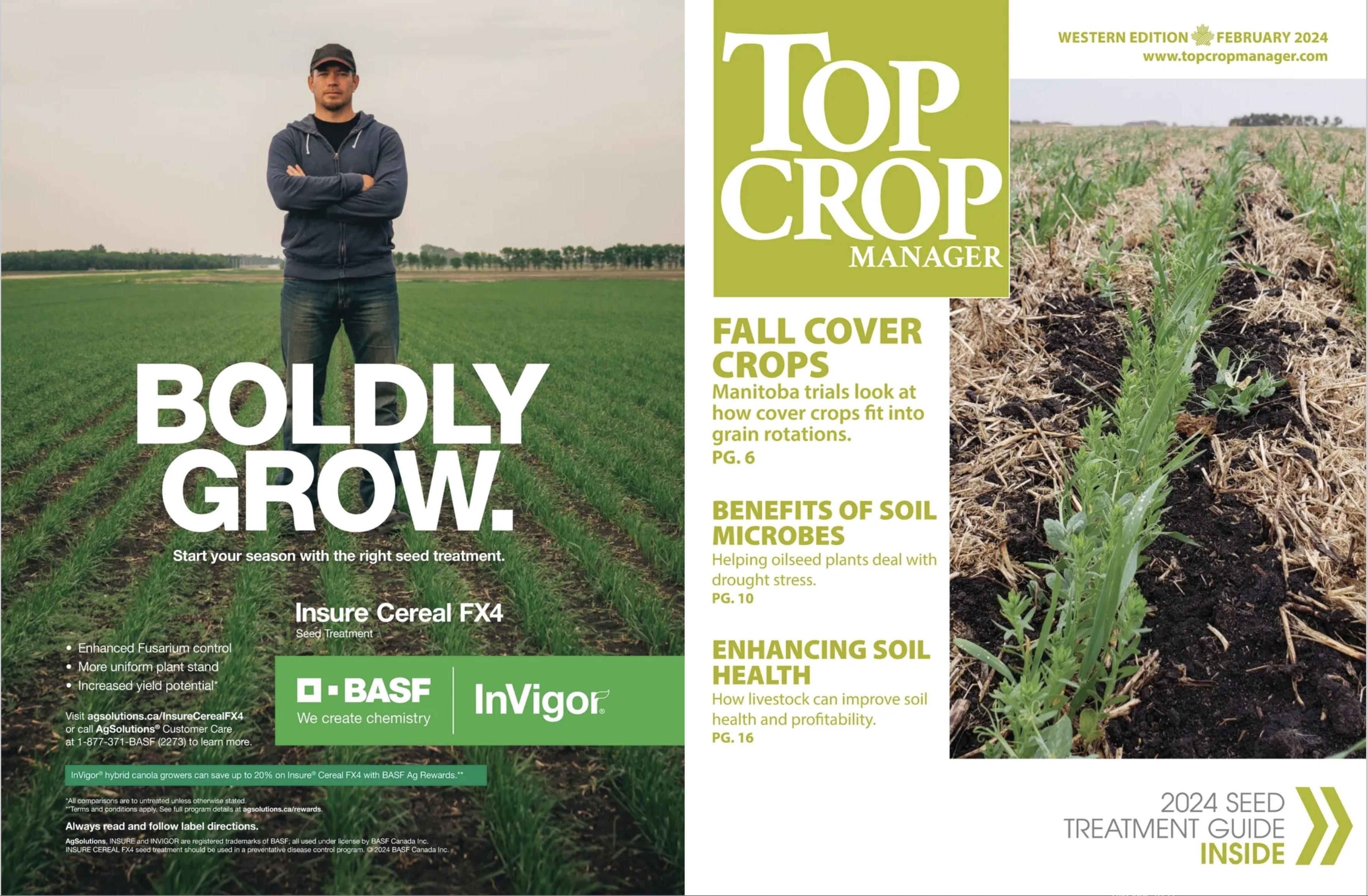

It runs in the family.
When you have a dedication to delivering yield and quality, the wins follow from field to field, crop to crop and season after season.
Certain families have unmistakable traits and talents: Simply powerful disease control. Durability and dependability built on breakthrough technology. The confidence to grow higher quality crops and push yields. These are all things that run in the Miravis® fungicide family…and the achievements you see on its mantlepiece.
This season, create mantlepiece-worthy moments on your farm with Miravis®


learn more about the
and
of
visit
To
Miravis® family
fungicides,
Syngenta.ca/Miravis Always read
follow label directions. Miravis®, the Alliance Frame, the Purpose Icon and the Syngenta logo are trademarks of a Syngenta Group Company. © 2024 Syngenta.
6 | Fall cover crops assessed in Manitoba
On-farm field testing found negative impacts on yield and economics during three dry years
By Bruce Barker

10 | Soil microbes for drought-resilient crops
Improving the drought tolerance of canola and other oilseeds from the bottom up By
Carolyn King
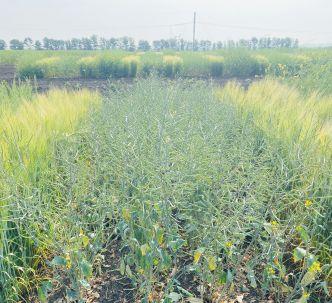
16 | Reintegrating livestock into cropping systems
Integrated systems may improve soil health and cropping system profitability
By Donna Fleury
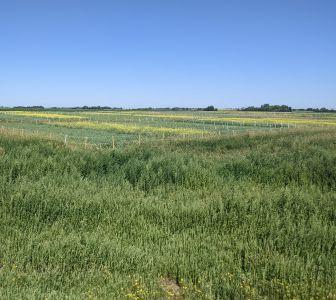
Julienne Isaacs
ON THE WEB


DEREK CLOUTHIER EDITOR
PUTTING YOUR SOUL INTO YOUR SOIL
Agrower can do everything right in their field – plant seeds at the perfect time, be blessed with perfect weather conditions, implement an effective weed and pest management strategy and everything else that leads to high, quality yield – but without good soil health, those efforts can be all for not.
In this latest issue of Top Crop Manager West, we take a look at the importance of soil health and some of the research that goes into ensuring the soil in our western Canadian fields is providing an ideal environment for crops to thrive.
With our readers in mind, we have included a wide range of soil-health-related features in our February issue, including stories on cover crops and how they impact soil health, which micronutrients are of concern in Western Canada and a look at how reintegrating livestock systems can help improve overall soil health.
So, to quote an ancient Greek philosopher, “To be a successful farmer, one must first know the nature of the soil.”
Top Crop Summit
It’s that time of year again for Top Crop Manager’s annual event – Top Crop Summit. A year ago, I hosted by my first event in Saskatoon, and this year, I will in Saskatchewan’s capital city once again. Having put together a lineup of fantastic speakers who will offer presentations on a wide range of topics impacting the industry – drones, disease, managing drought, herbicide resistance and several other issues – I’m particularly excited for our ninth annual summit this Feb. 27-28.
In addition to wanting to hear from and learn about the issues facing Canadian farmers and agronomists, I’m perhaps even more looking forward to being at Saskatoon’s Prairieland Park for our event to again see people face-to-face, something I don’t get the opportunity to do often. Getting to see and chat with our speakers and to those of you who will be attending the summit is one of the best ways for me to learn about the industry and make valuable connections.
Admittedly, I felt like a bit of a stranger hosting last year’s summit. The event was planned and the speakers were booked long before I stepped into my current position. But this time around, having met some of our speakers already, and working with each of them to help provide attendees valuable and informative sessions with information they can take home and implement to improve their growing season, brings me a great sense of satisfaction.
As always, I welcome any feedback you might have following Top Crop Summit on how we can continue to make it better and more valuable to our attendees. So please, if you see me say hello, or reach out to me anytime.
M2H 3R1
Derek Clouthier • 403.470.4432 dclouthier@annexbusinessmedia.com WESTERN FIELD EDITOR
Barker • 403.949.0070 bruce@haywirecreative.ca NATIONAL ACCOUNT MANAGER Quinton Moorehead • 204.720.1639 qmoorehead@annexbusinessmedia.com NATIONAL ACCOUNT MANAGER
Uppal • 437-922-7359 ruppal@annexbusinessmedia.com
Scott Jamieson sjamieson@annexbusinessmedia.com
Printed in Canada ISSN 1717-452X
PUBLICATION MAIL AGREEMENT #40065710
SUBSCRIPTION RATES
Top Crop Manager West – 9 issues Feb, Mar, Mid-Mar, Apr, May/June, Sept, Oct, Nov and Dec – Canada 1 Yr $49.47; 2 Yr $79.05 (Canadian prices do not include applicable tax) USA 1 Yr $112.20 CDN; Foreign 1 Yr $134.13 CDN
Top Crop Manager East – 5 issues Feb/Mar, Apr/May, May/Jun, Sep/Oct, Nov/Dec Canada 1 Yr $49.47; 2 Yr $79.05 (Canadian prices do not include applicable tax) USA 1 Yr $112.20 CDN; Foreign 1 Yr $134.13 CDN Potatoes in Canada – 1 issue Spring – Canada 1 Yr $17.85; 2 Yr $28.56 (Canadian prices do not include applicable tax) USA 1 Yr $40.29 CDN; Foreign 1 Yr $51.51 CDN Occasionally, Top Crop Manager will mail information on behalf of industry related groups whose products and services we believe may be of interest to you. If you prefer not to receive this information, please contact our circulation department in any of the four ways listed above.
Annex Privacy Office
privacy@annexbusinessmedia.com • Tel:






topcropmanager.com
TRYSTON BEYRER, PH.D. CROP NUTRITION LEAD, THE MOSAIC COMPANY

TAKE ACTION AGAINST GROWING VARIABLES WITH PROPER NUTRITION
Why your crops need a foundational fertilizer application
With Western Canada experiencing drier- and warmer-thannormal weather this fall and winter, and crop nutrition demands growing, farmers must consider many variables regarding spring planning.
Follow the 4Rs of Nutrient Stewardship to enhance your fertilizer efficiency this year:
1. Right source: Match fertilizer type to crop needs
2. Right rate: Match amount of fertilizer to crop needs
3. Right time: Make nutrients available when crops need them
4. Right place: Keep nutrients where crops can use them
This science-based framework leads to increased production and profitability, enhanced environmental protection and improved sustainability.
Proper crop and soil management techniques play a role in producing healthier, higher-yielding crops. Give crops what they need to grow strong throughout the season, starting with a foundational fertilizer application.
Crops require higher amounts of nutrients than what’s removed by the grain at harvest. Nutrients from the soil and added fertilizers supply these uptake needs.
Drier weather can make fertilizer more important, as it takes higher concentrations of nutrients from fertilizer within the soil to efficiently move to the plant roots with a limited amount of water. Reducing or skipping fertilizer applications altogether can re-

sult in yield loss or soil fertility decline well beyond 2024. Why take the chance? After all, crop nutrition accounts for up to 60% of crop yield but only about 20% of the total cost of production.
Your crop nutrition CHECK list
Maximize your investment for improved ROI: Apply the right nutrients for your crops, and distribute them uniformly. If you don’t, you risk over- or under-feeding your crops.
To support growers and retailers in achieving uniform nutrient distribution, The Mosaic Company’s Director of New Product Development, Dr. Ross Bender created a “CHECK” list. Think of this as your roadmap for fertilizer application.
• Calibrate: Encourage retailers to do calibrations on fertilizer sources they run through bulk spreaders. Efficient nutrient application requires the right blending.
• Handling: Fertilizer integrity is imperative. Store in a clean, dry location, with a good roof, and in a way that different fertilizers can’t become mixed together.
• Equipment: Use tools that supply nutrients when the crop needs it, in a way that it can take it up through the roots, to have a better chance of improving efficiency and getting a return on that fertilizer dollar.
• Confirm: Visually inspect the field after application. Check again right after germination and during early season crop growth to see that the plants look even in development.
• Knowledge: Stay informed with research and technologies around improved accu-
racy and speed of uniform application.
Talk with your retailer or agronomy advisor on how to keep your crop nutrition in CHECK.
Count on proven performance
Growers are faced with a lot of variables with which to contend – from weather, to crop prices, nutrient loss and more. While the only constant may be change, there is a lot on the line when it comes to growing healthy, robust yields.
The key is to find a dependable and innovative fertilizer product to perform and give you the ROI you expect, while providing your crops with the nutrition they need.
Look for a product that offers:
• Consistent particle sizes and densities
• The right kinds of nutrients at the right levels
• Uniform nutrient distribution
• Increased nutrient uptake
• Season-long nutrient availability
Stay curious about your crops. Read field research trials, published findings and results. Find a fertilizer product you can trust to consistently deliver in a world of change. And set your crops and fields up for success by giving them the nutrition they need from the start.
MicroEssentials® delivers in each single granule a balanced mix of phosphorus, nitrogen, zinc and two forms of sulfur – sulfate and elemental – for uniform nutrient distribution, season-long sulfur availability and increased nutrient uptake that leads to higher yields and ROI.

FALL COVER CROPS ASSESSED IN MANITOBA
On-farm field testing found negative impacts on yield and economics during three dry years, but potential for other benefits.
by Bruce Barker
The value of a fall cover crop depends on a farm’s objective. Cover crops prevent soil erosion, increase biodiversity and provide soil and environmental benefits. On the other hand, there are labour, seed and equipment costs. A network of multi-year on-farm trials in Manitoba looked at how cover crops could fit into annual grain rotations. A cost-benefit analysis for adopting this new practice was also conducted.
“When this project started in 2019, there was limited on-farm research on the Prairies looking at the agronomic and economic impacts of growing cover crops on the following cash crop and on soil health,” says Dale Penner, a master’s student under the supervision of Yvonne Lawley in the Department of Plant Sciences at the University of Manitoba.
Penner conducted his research from 2019 to 2021 at six sites across southern Manitoba near Brandon, Cartwright, Dominion City, Homewood, Roland and Rosenfeld. Each field had four rep -
licates of paired field-length plots. The farmers followed their standard crop rotation and established a fall cover crop in each year when environmental conditions allowed. He says there were 10 different cover crop combinations grown between the six fields over the three years.
The cover crop species varied between fields, but most farmers used fall rye or oats. Other broadleaf species that were tried included flax, peas, phacelia, sunflower, crimson clover, canary seed, buckwheat and radish. Of the 17 site-years, 12 were successfully seeded to a fall cover crop after harvest, while the other five were harvested too late to allow seeding and establishment. Crops such as pinto beans and soybeans were harvested too late for establishing fall cover crops.
ABOVE: Penner’s research compared field-sized plots of cover crops to a control.
MAKE IT EASY TO CLOSE THE DEAL
Making it easy to close the deal for 25 years and counting. Get the same great rates on new or used equipment for your operation. Learn more at fcc.ca/Equipment
Cover crop seeding dates were guided by the window used for winter wheat. Most of the cover crops were sown between late August and before Sept. 15.
“The seeding date varied by farm. As part of the project, we wanted to observe farmers making decisions in real-world scenarios,” says Penner.
Termination method of the cover crop depended on the species. Fall rye was terminated either in the fall or spring with a herbicide. Other species were winter-killed.
The fall cover crop strip was compared to the adjacent control strip without a cover crop. Fall dry matter establishment and ground cover percentages were measured just before the first fall frost. Fall emerging weeds and volunteers were not controlled with herbicides in the control strips because the width of the strips did not match up with the farmers’ sprayer boom widths.
“Although this was a limitation in the study, we learned that volunteers and weeds could make a significant contribution as a cover crop from the control treatment,” says Penner. “Unfortunately, this likely minimized the treatment differences between the cover crop and the control treatment in our study.”
Grain yield was measured annually for the cover crop and control plots, and the Saskatchewan Assessment of Soil Health score was used to assess changes in soil health after three years.
Increased dry matter and ground cover
Of the 11 site-years where dry matter weight was measured, four site-years had significantly higher dry matter yield with a fall cover crop when compared to the volunteers in the control treatment.
Due to the short fall growing season after harvest and dry conditions that often limited fall cover crop emergence, Penner says the control treatments with weeds and volunteers often resulted in dry matter yield as high as the cover crop.
In the case of ground cover, the story was a bit different. Seven of 11 fall cover crop treatments had significantly higher fall percentage ground in the cover crop treatment compared to the control treatment. “The fall cover crop was much more uniform than the control. The ground cover from the growth of the weeds and volunteers in the control treatment was unevenly distributed,” says Penner.
Lawley says the use of volunteers as a cover crop needs to be investigated further. “It’s an interesting concept that makes a cover crop easier to implement. There is a saving in seed and labor costs, but there may be some negative implications such as disease carryover to watch for with volunteers.”
Negative yield and economic impact
Yield of the following crop was lower where a fall cover crop was grown compared to the control treatment when averaged over six site-years. Small differences of a one to two bushels per acre decline were measured.
“We didn’t see any differences in soil moisture when it was measured in the fall and spring after the cover crop. Soil nitrogen tests in the fall and spring also had very marginal differences, so it is hard to say why there was a yield drag,” says Penner.
In the second year after a cover crop, there was no difference in yield between the cover crop and the control strips.
The negative economic impact of a fall cover crop was mainly

Every day new challenges, obstacles, roadblocks and uncertainties threaten your farm’s progress. That’s why you need solutions that work. You need agronomists that know the industry. You need answers. Because regardless of the unknowns, you always have to make a decision. Make the most with what you’ve been given by tapping into the nutrient enhancing technologies from Koch Agronomic Services proven to create a positive impact in your fertility program.
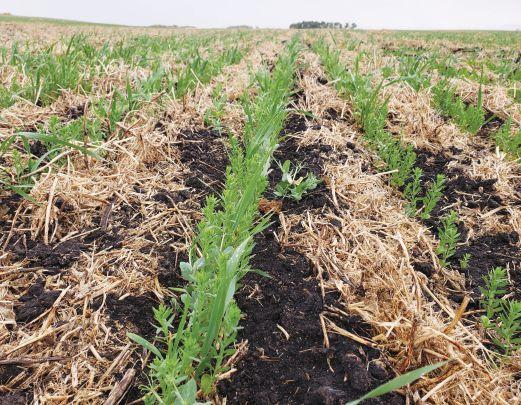
related to the loss of yield and the additional seed costs. The average loss was $72.47 per acre ($179/ha) but ranged from a loss of $151/ac ($373/ha) to a profit of $25.91/ac ($64/ha).
One of the six sites had a significant improvement in its soil health score when compared to the control treatment. Lawley was expecting that a longer time frame, perhaps five years, would be needed to see measurable changes in soil health.
“The fields in the study are representative of their area, but the
farmers themselves aren’t what I would call a ‘control’ farm. They are early adopters and have an interest in practices to advance soil health. Some have been in minimum and no-till for many years with diverse crop rotations, so their soil health score is already high,” says Lawley. “It wasn’t surprising that we didn’t see a difference in soil health in all of the experiment fields after three dry years.”
Penner says for widespread adoption in Manitoba, the long-term benefits to the soil and environment need to balance the economic costs, especially when conditions are dry.
“It depends on your goal. Cover crops could be most beneficial following low-residue crops, especially where soils are prone to erosion,” says Penner. “In these situations, keeping the soil in place would provide a major economic benefit over the long term.”
Lawley says the research provided important data over three dry years.
“It is important to keep expectations realistic. In dry years, a fall cover crop may impact yield, but in wetter years, a cover crop can help use some of the excess soil moisture to improve crop production,” says Lawley. “This on-farm research project cracked open opportunities to learn about the potential of fall cover crops in annual grain rotations and about how we may need to adapt their management to include things like intercropping cover crops with spring cash crops to overcome some of the challenges we faced during these three dry years in the eastern Prairies.”
Support for this research came from Manitoba Agriculture through the Canadian Agricultural Partnership, General Mills and Agriculture and Agri-Food Canada’s Living Labs program. This research wouldn’t have been possible without the farmer co-operators.

A cover crop of oats, flax, sunflowers and peas seeding into pea stubble.
SOIL MICROBES FOR DROUGHT-RESILIENT CROPS
Improving the drought tolerance of canola and other oilseeds from the bottom up.
By Carolyn King
The microbes in and around an oilseed plant’s roots could be a resource for helping the plant deal with drought stress. That’s the intriguing concept behind a project led by microbiologist Tim Dumonceaux, a research scientist with Agriculture and Agri-Food Canada (AAFC) in Saskatoon.
“Plants use a variety of methods to condition the soil environment around their roots to try to get microbial populations that will benefit the plant,” says Dumonceaux, outlining some of the science underlying this concept. “One really important way is by excreting various compounds, called root exudates, from their roots into the soil.”
He explains that these root exudates influence the composition of the microbial community around the roots by attracting and encouraging microbes that thrive under these soil conditions. In turn, these microbes can influence the plant, for better or worse. For instance, some of the microbial species might bring nutrients to the plant, some might cause disease in the plant, some might help the plant survive weather stresses like drought.
So, a plant’s root-associated microbial community is intimately linked to the plant’s growth, survival and productivity. In a sense, the plant and its microbiome form a single, interdependent unit.
Dumonceaux suspects that the microbial communities associated with the roots of drought-tolerant oilseed plants might be an important part of the ability of those plants to withstand drought. His project is seeking to shed light on the role these communities play in an oilseed plant’s response to drought and on how to enhance the microbial contribution to improved drought tolerance.
Funded by the Canola Agronomic Research Program (CARP), his three-year project is investigating the below-ground microbial communities of drought-tolerant and drought-sensitive lines of canola and other brassica oilseed crops.
Project activities include analyzing the species composition of the root-associated microbial communities of these oilseed lines when grown under different moisture conditions; experimenting with some of the individual microbial strains in lab and greenhouse trials; and analyzing the root exudates of the different lines and looking at how the different exudates relate to the plant’s drought tolerance and the microbiome.
Interestingly, just as root-associated microbes and their plant host are interdependent, Dumonceaux’s microbial project is tied in with a related project about drought tolerance in oilseed crops from a plant perspective.
That related project is led by two of his AAFC-Saskatoon col-
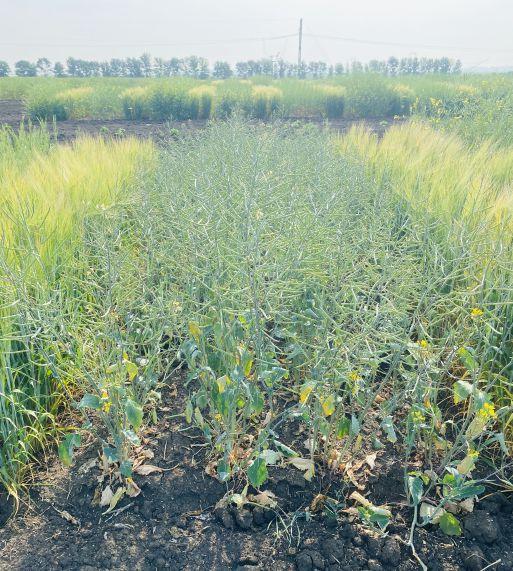
leagues, research scientists Christina Eynck and Isobel Parkin. Their project is one of several projects that together make up a major fiveyear effort on drought adaptations in Canadian agricultural ecosystems, which is funded by the Genomics Research and Development Initiative (GRDI), a federal interdepartmental program.
Eynck is a breeder of brassica oilseed crops and Parkin is a molecular genomics researcher focusing on brassica species. Their GRDI project is investigating the molecular biology and phenotypic aspects of drought stress in canola (Brassica napus), Ethiopian mustard (Brassica carinata) and camelina (Camelina sativa).
“The CARP project is working hand-in-glove with this GRDI project and relies on it for samples and [brassica] expertise,” notes Dumonceaux. Both projects started in 2022.
Analyzing microbial DNA
One component of Dumonceaux’s project involves using DNA se-
A drought-tolerant canola line grown under dryland conditions at the AAFC-Saskatoon research farm.
quencing to identify and quantify the below-ground microbes associated with drought-tolerant and drought-sensitive oilseed lines. His research group collects and analyzes samples from the plant roots, the rhizosphere, which is the soil immediately next to the roots, and the bulk soil, which is the soil a little farther away from the roots.
They extract the total DNA from each sample and then look for certain DNA sequences, known as taxonomic markers, which help identify which types of microbes are present. However, some taxonomic markers are better than others at differentiating between closely related things, like different species in the same genus or different subspecies in the same species. “So, as part of our year-one work, we looked at different taxonomic markers and different preparation methods to achieve the most accurate microbial community profile we can,” says Dumonceaux.
Consequently, his group is using two common markers, one for differentiating bacteria and the other for differentiating fungi, as a first pass to get a feel for the microbial community – at least down to the genus level. Then, if they need higher-resolution species information for certain samples, they’ll use a different marker, called chaperonin-60, which helps in getting down to the species or even the subspecies or strain level in some cases.
Drought response and microbial communities
In 2022, Eynck and Parkin’s GRDI project team started the task of screening many different canola, Ethiopian mustard and camelina lines for response to water-limited conditions in greenhouse experiments. Through this phenotyping work and previous studies, the team has already identified a number of drought-tolerant and drought-sen-
sitive lines. In 2023, the GRDI team planted those lines in a field trial at AAFC-Saskatoon’s research farm. To compare the effects of watersufficient and water-stressed conditions, half of the trial was irrigated and the other half was dryland.
In these plots, Dumonceaux’s group targeted four oilseed lines: a drought-tolerant canola, a drought-sensitive canola, a drought-tolerant Ethiopian mustard and a drought-sensitive Ethiopian mustard. They sampled the root, rhizosphere and bulk soil of the four lines in both the irrigated and dryland plots.
At present, his group is analyzing the DNA from hundreds of samples collected from the 2023 plots.
Once they have the microbial DNA data and the GRDI oilseed phenotypic data for the lines, Dumonceaux and his group will use standard and new statistical tools to tease out which microbes or groups of microbes are associated with and possibly contributing to improved drought tolerance in the oilseed plants.
“For example, an exciting recent statistical tool provides a way to look at which microbes tend to appear together in different circumstances,” he says. “Essentially, it allows you to identify taxa that occur together either in a positive or a negative relationship. And you can characterize how these microbes relate to one another in the whole network of microbial taxa. This tool has a lot of potential for identifying strains that are very interesting to us.”
Root exudate analysis
Root exudates are organic acids made by plants. “Plants fix atmospheric carbon dioxide using the energy from sunlight and synthesize small organic acids. They transport those organic acids down to their 23_011326_Top_Crop_Western_FEB_CN Mod: January 3, 2024 1:56 PM Print: 01/03/24 page 1 v2.5
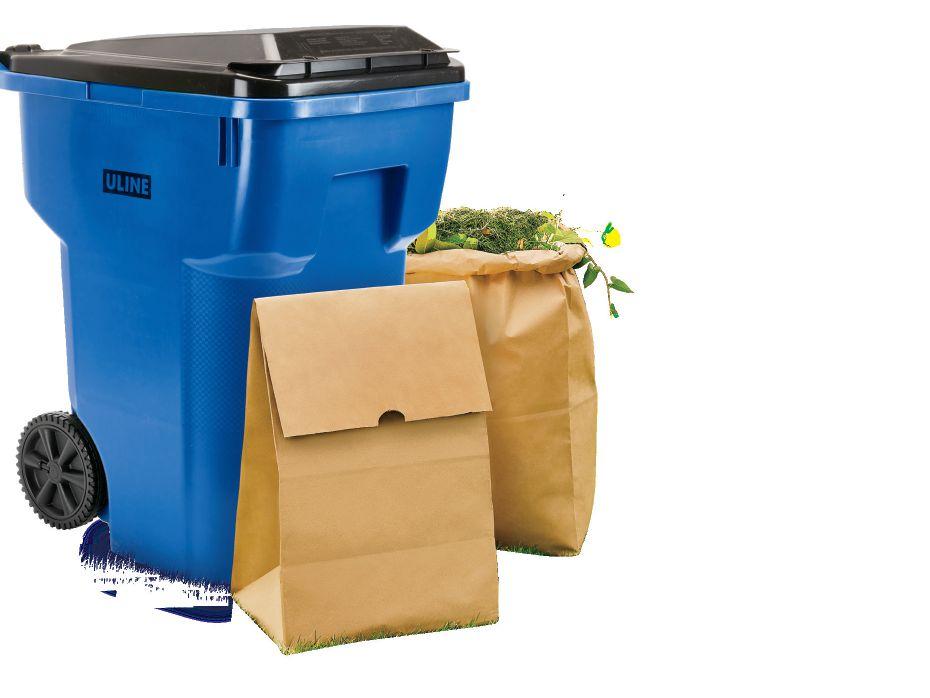


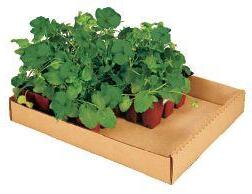
ORDER BY 6 PM FOR SAME
roots and exude them into the soil immediately around the roots, to encourage the growth of the microorganisms that benefit from those organic acids,” Dumonceaux explains.
“Plants produce a whole range of these root exudates. So, the plant conditions the soil through its metabolic activity.”
The technical capacity to analyze these exudates is increasing these days. A few years ago, Dumonceaux was one of the principal investigators in a CARP study completed in 2021 that looked at root-associated microbes in various canola rotations. At that time, his group had access to analytical capacity for quantifying five different root exudates. However, thanks to some new equipment and newer methods at the University of Saskatchewan’s Soil Science department, his group can now quantify 13 root exudates.
In 2022, Dumonceaux’s group refined the protocols for using the new equipment to quantify quite small amounts of exudates. Then they tested their protocols with some drought-tolerant and -sensitive lines grown under water-sufficient conditions in a greenhouse experiment. This test confirmed they could quantify all 13 exudates. Having better exudate data should help in developing a clearer picture about things like the exudate differences between the tolerant and sensitive lines, how a plant’s exudate profile is affected by water-sufficient and water-limited conditions and how the different exudates relate to microbial community patterns.
Interestingly, this test also found statistically significant differences in the profiles of the root exudates produced by the tolerant and sensitive lines.
“This is really important,” says Dumonceaux. “Since the plants were not under drought stress, these differences suggest there is a different genetic potential for producing these root exudates between the different lines. That lends credence to the idea that the droughttolerant and drought-sensitive lines differentially condition the soil environment to each get a distinct microbial community.”
Dumonceaux’s group is currently analyzing the root exudates of the drought-tolerant and -sensitive lines in the 2023 samples.
Evaluating individual strains
To get another angle on the plant-microbe relationships, Dumonceaux and his group are planning to isolate, identify and culture some of the microbial strains associating with the drought-tolerant oilseed lines. They’ll use these cultures in greenhouse trials to study the mechanisms by which these microbes may contribute to a plant’s ability to withstand moisture-limited conditions.
He says, “Having the actual microorganisms in our hands, whenever possible, will allow us to experiment with the microbes. For example, we can apply the root exudates and see which genes are induced [in the microbes], how that affects the drought-tolerant phenotype and that sort of thing.”
The GRDI project
Eynck and Parkin’s project includes several components related to their different areas of expertise.
For instance, one component involves developing and using sophisticated phenotyping tools to screen diverse collections of canola, Ethiopian mustard and camelina germplasm to identify drought-tolerant and drought-sensitive lines. The project’s ongoing greenhouse screening work includes collecting a range of data – such as transpiration rate, biomass accumulation and water-use efficiency – for the
different oilseed lines, grown under various soil moisture conditions. Based on the screening results, the team is selecting a few of the most drought-tolerant and the most drought-sensitive lines of each oilseed species. They are assessing these extreme lines more intensively, for example, looking at differences in photosynthesis and shoot and root system architecture, under controlled conditions simulating Prairie drought events.
“These assessments use state-of-the-art phenotyping tools, including 2-D and 3-D root imaging systems, multi-spectral shoot imaging sensors and deep-learning computer vision,” notes Dumonceaux. “They have already noticed some differences in the root architecture of the tolerant and sensitive lines.”
In 2024, the GRDI team will also be continuing the field trials with sensitive and tolerant lines under irrigated and dryland conditions at Saskatoon. As well, starting this fall, they will be growing the lines in Arizona in collaboration with United States Department of Agriculture researchers.
“By growing these lines in Arizona, we can collect field data during our winter season, and we can take advantage of the dry conditions there. Although we have dryland plots in the Saskatoon trials, we might get lots of rain in some years. We’re pretty sure the Arizona plots will not get much water unless we add it.”
For the field trials, the GRDI team is developing digital imagery methods, such as drone flyovers, to rapidly quantify detailed phenotypic characteristics of the different lines. “Such methods could really upscale the ability to screen all the different lines for the phenotype of interest,” says Dumonceaux.
One of the other project components is investigating the genetic mechanisms and biomarkers related to adaptation to water-limited conditions in the oilseed lines. This work includes various analyses such as examining which genes are expressed and which metabolites are produced by the different lines when exposed to drought stress.
Dumonceaux adds, “This will be combined with the microbial work to give a holistic sense of the drought-tolerant lines’ responses to water-stressed conditions.”
Future possibilities
Ultimately, combining and analyzing the data from the GRDI and the CARP projects could point the way to innovative strategies for improving the ability of canola, camelina and Ethiopian mustard crops to survive and recover from very dry conditions.
Dumonceaux sees various possible ways the findings from his CARP project might contribute to increased drought tolerance in the three oilseed species. He notes that these possibilities have parallels to the probiotic and prebiotic approaches used in adjusting the gut microbiome of humans and agricultural animals to improve their health.
“Probiotic approaches are where you add a microorganism to obtain benefits. Prebiotic approaches are where you add something to the feed to influence the composition of the microbial communities in the gut,” he explains.
Dumonceaux’s research collaborators on the CARP project include Jennifer Town with AAFC-Saskatoon, Bobbi Helgason at the University of Saskatchewan and Sean Hemmingsen of the National Research Council Canada at Saskatoon. Collaborators with Eynck and Parkin on the GRDI project include Raju Soolanayakanahally, Sally Vail and Hema Duddu at AAFC-Saskatoon, and Steve Shirtliffe at the University of Saskatchewan.
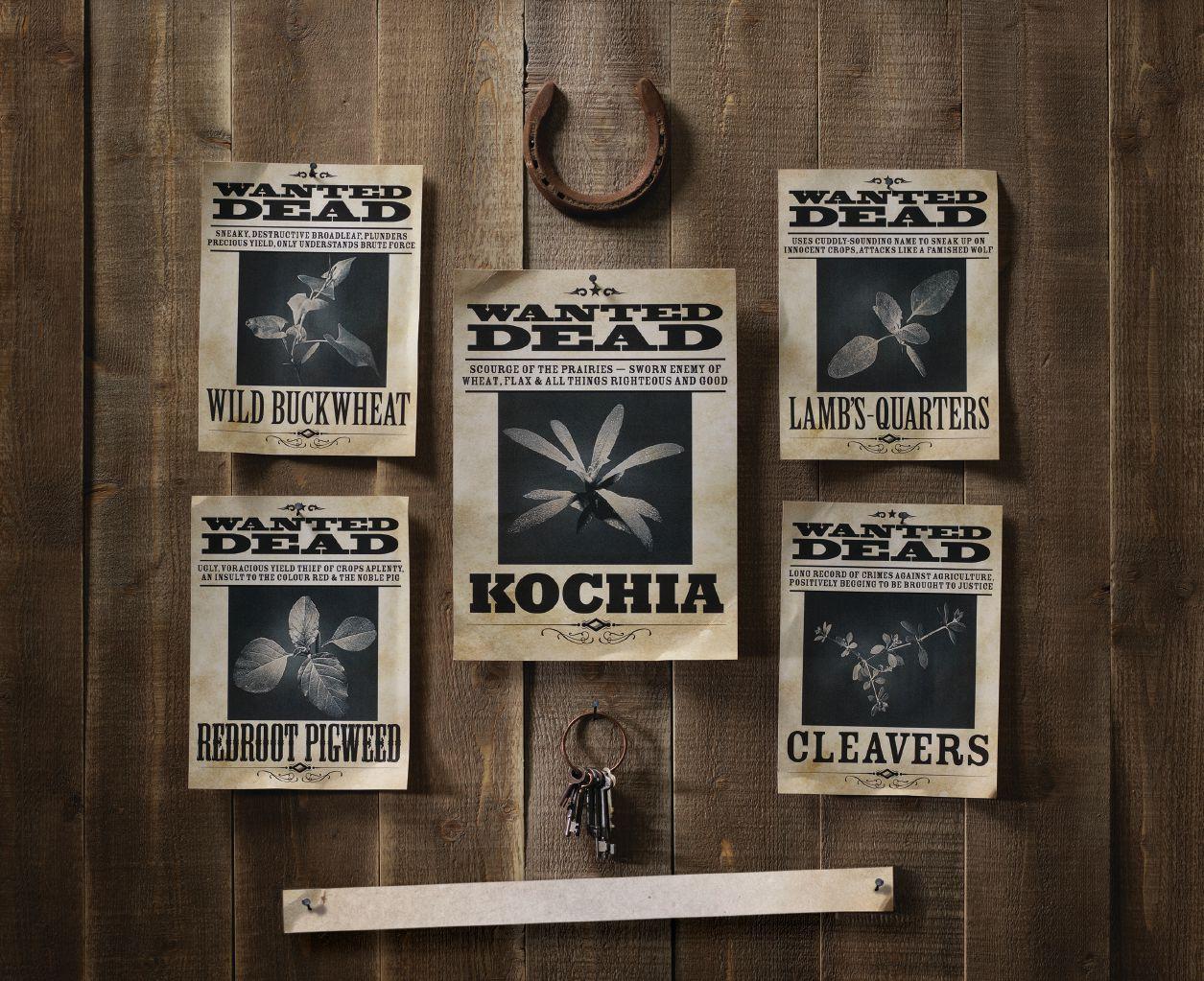




KOCHIA NEVER RIDES ALONE. GET THE WHOLE POSSE.
When you apply pre-emergent Authority® 480 herbicide, you’re after kochia and you mean business. But it’s not like the other weeds can jump out of the way. Yes: Authority® 480 herbicide controls kochia with powerful, extended Group 14 activity in wheat, peas, flax and more. It also targets redroot pigweed, waterhemp, cleavers* and wild buckwheat.
Authority® 480 herbicide. Gets more than kochia. But man, does it get kochia.
WHEAT | FIELD PEAS | FLAX | CHICKPEAS | SOYBEANS | SUNFLOWERS









REWARD OFFERED. GET CASH BACK WHEN YOU BUY AUTHORITY® 480 HERBICIDE

*Suppression.
Smart Nutrition MAP+MST granular fertilizer supplies your soil with all the sulfur and phosphate it needs, when your crop needs it. Using patented Micronized Sulfur Technology (MST), sulfur oxidizes faster allowing for earlier crop uptake — making the nutrients available to your crops when it’s needed most.
Learn how Smart Nutrition MAP+MST can boost your soil’s performance and maximize your ROI at SmartNutritionMST.com


©2024 Nutrien Ltd.; SMART NUTRITION, NUTRIEN logos and designs are registered trademarks owned by Nutrien Ltd. MST® logos and designs are registered trademarks owned and used under license by Sulvaris Inc



Intense heat, heavy rain, standing water and ponding might be a problem for the average urea granule, but ESN has never been average. ESN’s polymer coating protects granules from nitrogen loss through leaching, denitrification and volatilization. Your crops get the nitrogen they need, when they need it –and you get better yields for a more profitable ROI.
REINTEGRATING LIVESTOCK INTO CROPPING SYSTEMS
Integrated systems may improve soil health and cropping system profitability.
by Donna Fleury
Managing cropping systems to improve productivity and system resilience relies on enhancing soil health. Soil organic matter is an integral part of the concept of soil health and has numerous benefits, including soil moisture retention, improved nutrient cycling and enhanced crop productivity. Researchers are exploring how reintegrating livestock into cropping systems may be a strategy for improving soil health and cropping system profitability over time.
“With the interest in improving soil health and utilizing agricultural soils for carbon sequestration, we wanted to explore whether reintegrating livestock into cropping systems could be one of the strategies. We established a new project in 2021 to develop the framework for the long-term experiment and rotations,” explains Maryse Bourgault, assistant professor and Western Grains Research Foundation (WGRF) integrated agronomy research chair at the University of Saskatchewan. “There is little research attempting a direct comparison of cropping systems and livestock integration, and this project addresses this major knowledge gap. This project takes a grain crop-centered approach, where livestock and annual or perennial forages are integrated at varying degrees to provide increasing levels of services to the grain cropping system. Initially, the project was funded through my larger WGRF research program, and more recently, we have received ADF [Agriculture Development Fun] funding that is helping us expand the project and capacity for measuring soil health and cropping system profitability.”
The project is being conducted at the USask Livestock and Forage Centre of Excellence facility at Clavet and includes several different cropping systems, including annual grain crops, annual forages and perennial forages. The overall objective of the project is to determine the degree of forage and/or livestock integration needed to improve soil health and cropping system productivity and profitability over time. The cropping systems include a diversified grainoilseed-pulse four-year annual cropping rotation, such as cereals, peas and canola. Annual forages are included once or twice in a four-year crop rotation, and depending on the rotation, are usually a mixture of three or four species, including a mixture of cereals or a cereal-pea mix, such as triticale with oats, barley and peas, or a mixture of forage brassicas and cereals. The project also has perennial forage phases, including a three-year phase with a mixture of four or five species of legumes and grasses, and a six-year phase that includes alfalfa added to the mixture.
“We use extensive electric fencing to allow us to either include cat-
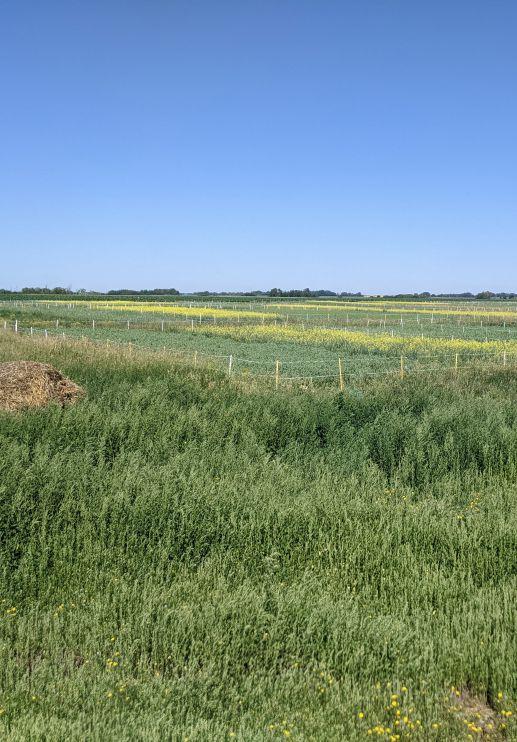
tle grazing on the annual and perennial forage plots or to exclude them to help determine whether there are any differences of having cattle or not on the plots,” says Bourgault. “The plots are medium sized at 24 x 100 feet, so fairly large compared to typical smaller breeder plots but still small compared to commercial fields. Generally, we plan to have the cattle grazing the plots for a week to 10 days, depending on the year and the amount of forage available. Although we intended to also include fall grazing of annual crop residues, the cropping conditions so far haven’t made that possible. We are only taking observational data of
The long term experiment and rotations set up with the electrical fences before grazing was implemented.


cattle feeding, and so far, noted they do really like the annual forages; in particular, the cereal-pea plots are always eaten right down. Contrary to what some research shows, these cattle are avoiding any kochia that appears in the plots and definitely prefer the forage crops.”
Bourgault notes the objective of including the livestock in the experiments is to determine how much of a contribution livestock make to soil health by being part of this system versus just having a perennial plant system. She expects there will be benefits to soil health by having cattle as part of the system since the way cows transform plant material into manure and the manure decomposition is different than just straight plant residues. However, how long it will take to see results or how much livestock integration is needed are questions that still need to be answered over the long term.
“At the beginning of the project, we collected baseline samples for various soil health indicators that will help determine improvements in soil health and cropping system productivity over time,” says Bourgault. “In 2024, we will be going into year four of the rotation, and it will be the first year of terminating the three-year perennial forage, so it will be interesting to see the results. The rotation will return to an annual grain cereal crop. One of our researchers, Bobbi Helgason, has started some analysis of the microbial populations on the annual and perennial forages, comparing the grazed plots with the exclusion plots. It is going to be interesting to see if the results show any differences in the microbial populations and if they can tell us whether the cattle have been on the plots or not.”
“We expect to start to see some early results by year five or six of the rotation,” adds Bourgault. “The ADF funding includes the addition of a graduate student specifically focused on this project. This will allow us to continue with more in-depth soil health and productivity analysis and evaluation. Hopefully, this information will help us understand whether perennials and livestock are necessary to build soil health or if similar benefits could be achieved without livestock grazing. If the benefits are coming from livestock grazing, could they be achieved with annual forages included once or twice in a four-year crop rotation, and how may that differ from a three-
year or longer perennial rotation? We expect the results of this longterm project to help understand strategies for improving soil organic matter and soil health, particularly in dry years. These strategies can help Prairie crop producers improve yields and profitability and improve the overall resiliency of the cropping system.”
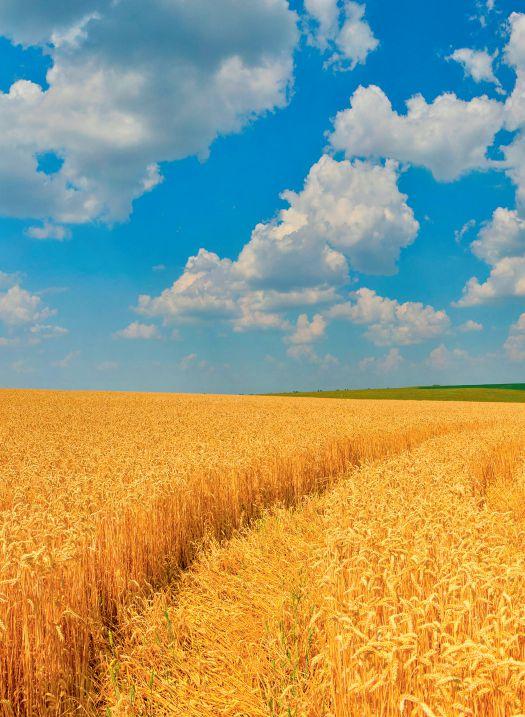

Comparing the perennial forage mix after being grazed (left) and excluded from grazing (right).
The first day of putting the cows on the forages for grazing.
FIELD PEA FERTILITY MANAGEMENT
Response to phosphorus fertilizer but not to sulfur or nitrogen.
by Bruce Barker
The ongoing high price of fertilizer means that growers must scrutinize their returns from every fertilizer dollar even more carefully than before. A Saskatchewan Pulse Growers funded study looked at the impact of different rates of nitrogen (N), phosphorus (P) and sulfur (S) in different combinations and application timings.
“The treatments were intended to allow us to measure the responses to varying rates of side-banded P and S fertilizer along with a few distinct N fertilization strategies,” says Chris Holzapfel, research manager with the Indian Head Agricultural Research Foundation at Indian Head, Sask.
Holzapfel was the lead researcher on the two-year research project conducted in 2019 and 2020 at Agri-Arm sites at Swift Current (dry Brown), Outlook (Brown), Scott (Dark Brown), Indian Head (thin Black), Yorkton (Black) and Melfort (moist Black). Soil test P levels were low at less than 12 ppm Olsen-P at 11 of 12 site-years.
Thirteen fertilizer treatments were compared to assess their impact on pea yield and protein. The treatments were different combinations of P and S rates, and several N fertilizer rates. The P source was monoammonium phosphate (11-52-0), and the sulfur source was ammonium sulfate (21-0-0-24). The N source was either urea (46-0-0) or polymer-coated urea (ESN; 44-0-0). All fertilizer was sidebanded except one treatment where N was also surface broadcast during the late vegetative stage.
Yield response to P
Averaged across all site-years, the lowest yielding treatment was the control with no fertilizer at a yield of 59.8 bushels per acre (4,016 kg/ ha), followed by treatment #2 with 17-0-0-10 (0P) at 62 bu./ac. (4,155 kg/ha). The numerically highest yield was treatment #5 with 53 lb. P2O5/ac. and 9 lb. S/ac. with no extra N at 67.6 bu./ac. (4,536 kg/ha).
However, yields from most of the treatments with modest rates of P were statistically similar. On average, Holzapfel says yields were increased by nine per cent with P fertilization, and the optimum rate was 36 lb. P2O5/ac. (40 kg P2O5/ha). He says that is approximately what is required to match removal in a 50 bu./ac. (3,360 kg/ha) pea crop.
Holzapfel says while yield increases were occasionally linear at some sites, with small gains right up to the highest rate, it is unlikely that rates exceeding approximately 36 lb. P2O5/ac. would be economically justified under most conditions.
“An exception could be when the objective of the producer is for

long-term building of residual P and yields of 50 bu./ac. or more are regularly achieved,” says Holzapfel.
The treatments with extra N had numerically lower yield than treatments with normal rates of N, but they were statistically similar.
“Our results did not show any benefits to N fertilization, and unless residual levels are extremely low or a nodulation failure is suspected, Saskatchewan field pea producers are advised to avoid applying any more N fertilizer than what is provided by the P and or S fertilizer products being utilized,” says Holzapfel.
There was no yield increase associated with S fertilization.
“Sulfur responses have been elusive in past research, and this was also true in the current project,” says Holzapfel. “It is unlikely that S deficiency has been much of a yield-limiting factor for the majority of field pea producers in Saskatchewan.”
For protein content, there were few significant differences between treatments. There was a significant linear increase in protein as P rate increased, but the increase was small, only increasing 0.4 per cent from zero P to 71 lb. P2O5/ac. (79 kg/ha).
“This effect might be attributable to generally healthier plants and root systems as the protein increase from phosphorus also came with a yield increase which was considerably larger in magnitude,” says Holzapfel.
Sulfur and N fertilization did not impact seed protein.
An economic analysis was conducted for each P rate, comparing two MAP prices of $550 and $750 per metric tonne, and a pea price of $6.25/bu. Averaged across all locations, the most economical P rate was 36 lb. P2O5/ac., and was the same for both MAP prices.

Field pea seed yield response to phosphorus fertilizer rate in Saskatchewan.

FEEL THE POWER IN LENTILS AND WHEAT
Growing lentils and growing wheat couldn’t be more different. Still, both benefit hugely from a clean start in the spring. Whether you grow lentils, wheat or both, insist on Focus® herbicide. Applied with glyphosate, Focus® herbicide provides everything you could ask for – burnoff and extended control on key grassy and broadleaf weeds. You’ll like the feeling of confidence that comes from giving your lentils and wheat exactly what they need. With modes of action from both Group 14 and 15, Focus® herbicide also provides excellent resistance management.

Focus® herbicide from FMC Canada: Lentils. Wheat. Burnoff. Extended. Done.

LENTILS | WHEAT | FIELD PEAS | SUNFLOWERS | SOYBEANS



PRAIRIELAND PARK TRADE AND CONVENTION CENTRE I SASKATOON, SK
FEBRUARY 27 - 28, 2024
Plan to join us on day one for insights from industry experts discussing Canadian crop production research and trends, followed by a half day focused on sprayer operation best practices, crop protection and technology.






Hear from these speakers and more at the summit on Feb. 27-28, 2024

Key lessons in sprayer development
Tom Wolf, Agrimetrix Reseach & Training


Chickpea mystery health issue in Saskatchewan
Dr. Michelle Hubbard, Agriculture and Agri-Food Canada
Crop diversity and cereal diseases
Alejandra Oviedo-Ludena, University of Saskatchewan



Impact mills on the Prairies
Dr. Breanne Tidemann, Agriculture and Agri-Food Canada
Managing after a drought
Lyle Cowell, Nutrien Wholesale
Dr. Charles M. Geddes, Agriculture and Agri-Food Canada

Dr. Tyler Wist, Agriculture and Agri-Food Canada
The Top Crop Summit has been approved for a total of eight CCA-CEUs, in the categories of Nutrient Management, Soil & Water Management, Crop Management, Integrated Pest Management and Professional Development. CCSC-CEUs are also available for all sessions.
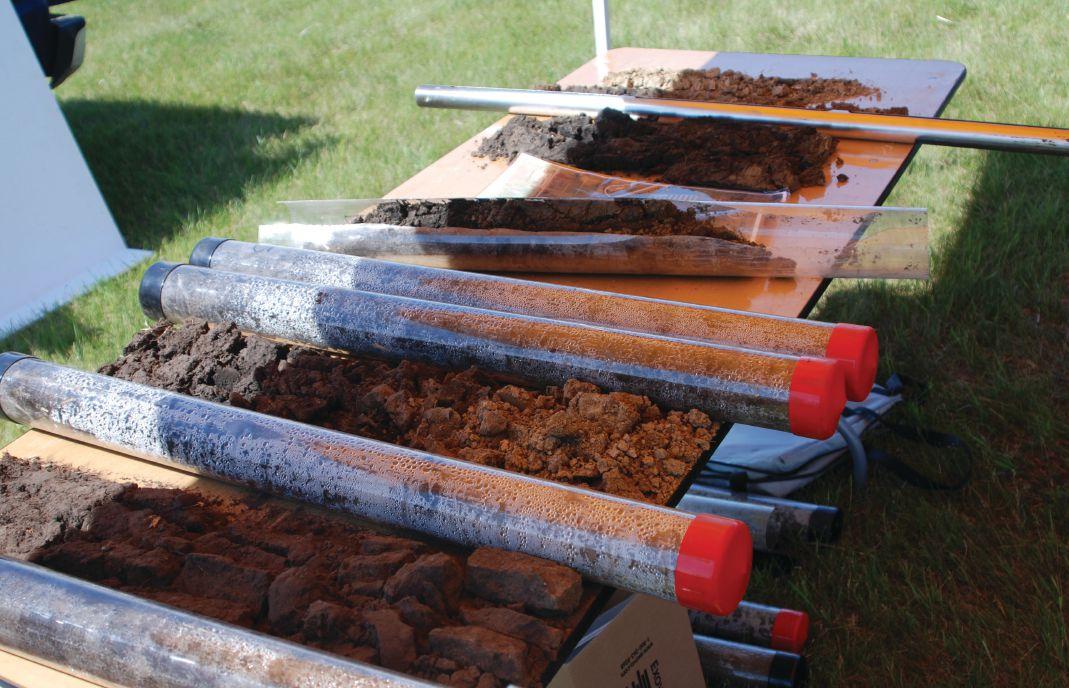
ALBERTA SOIL HEALTH BENCHMARK PROJECT UNDERWAY
Project to assist in assessing, interpreting and understanding soil health status and management responses in Alberta.
by Bruce Barker
Soil health is at the foundation of sustainable agricultural production. Yet, despite the importance of soil health to farmers and consumers, few methods exist to measure soil health or to establish a baseline for measuring improvement or degradation of soil health on a regional basis. A research project in Alberta is working to develop a better understanding of soil health and create a provincial database of physical, biological and chemical soil health indicators.
“The project was developed because there was a lack of information on soil physical and biological functionality. To assess the soil health status, physical and biological indicators need to be measured along with soil chemical (fertility) properties. Soil fertility had been the primary focus for soil evaluations in the past,” says Dr. Yamily Zavala, soil health and crop management specialist with Chinook Applied Research Association (CARA) – Oyen, Alta. “Soil biology plays a crucial role in improving soil health and healing the soil. The process is not well understood. However, even though the role in improving soil physical and chemical functionality has been well documented.”
Zavala says the evaluation of biological soil characteristics has been available but only used as a tool for soil health during the past few years in laboratories in the United States and more recently in eastern Canada. Existing biological and physical tests have not been evaluated and monitored specifically for Alberta soils. To fill in that gap, CARA led a five-year Soil Health Benchmark evaluation project in Alberta from 2018 to 2022. The study was funded by the Canada Agriculture Partnership (CAP) program.
The objectives of this study included: 1) evaluating soil health indicators, focusing not only on the chemical (complete soil fertility) soil properties but also on soil physical and biological constraints, and 2) creating a soil health benchmark database to develop provincial and regional Scoring Functions for assessing, interpreting, monitoring and understanding soil health status and management responses.
ABOVE: Alberta Soil Health Benchmark project is developing a way to measure and improve soil health.
Twenty soil samples for a minimum of 220 sites per year were collected by 11 of Alberta’s 12 Applied Research and Forage Associations (ARAs). At each location, a composite soil sample (six to eight cores) was collected using a two-inch diametre pipe sleeve. The depth of the sampling was based on the compaction layer found during the infield sampling measurements. If the 300 PSI compaction layer was within the top six inches of the soil, samples for that site were collected at two depths of zero to three inches and three to six inches. Otherwise, samples were collected at a zero- to six-inch depth.
At the CARA soil health lab (CARASHLab), samples were analyzed for biological and physical properties. Biological evaluations included active carbon, soil microbial respiration, total fungal and bacterial biomass, nematode and protozoa functional groups as part of the Soil Food Web. Physical properties were measured both in the field (soil compaction and water infiltration) and at CARASHLab (soil texture and wet aggregate stability). Chemical/soil fertility measurements like macro and micronutrients, pH, EC, cation exchange capacity and organic matter were analyzed by a commercial lab. Total carbon, organic carbon and total nitrogen were evaluated at the University of Alberta.
“Understanding the role of biology and physical soil parameters is linked to an increasing interest in soil health, plant health and ultimately food quality. There is also concern with carbon both in the air and the soil. Since carbon and soil health are very closely connected, management practices improving soil health to regenerate the agricultural system will also improve carbon sequestration,” explains Zavala.
Soil Health reports were initially generated using the Cornell
Comprehensive Assessment of Soil Health (CASH) framework. Statistical analysis was used for the Soil Management Assessment Framework (SMAF/CASH) to develop preliminary scoring functions for the Alberta Soil Health Benchmark.
“Alberta’s Soil Health Framework Tool uses these Score Functions to assess and monitor soil health constraints and to adjust soil health changes resulting from applied targeting managements,” says Zavala.
Data generated for each site sampled has been assembled into Soil Health Benchmark (SHBenchmark) comprehensive reports. The reports capture a picture of the soil health status and serve as a point of reference for comparison to future monitoring and management changes. Soil scoring curves provide an indication of whether the measurement is an area of concern or constraint for overall soil productivity. Suggestions for mitigation or improvement of soil-specific conditions are also provided.
Zavala says the soil health benchmark report is like a scorecard of baseline information that can be compared to future soil assessments and to monitor progress toward changing soil health constraints. She says Dr. Derek Mackensie at the University of Alberta has approached her to find a way for the Alberta Soil Health Benchmark information to be used in the development of an App for soil health assessments.
“Understanding soil health will give Alberta producers a valuable tool for making strategic management decisions on their farms and ranches,” says Zavala. “Our lab is unique, and we are calling it The Farmers’ Lab. Anyone can come and even assess their soils and plant samples with us. Another reason why it is a Farmers’ Lab is that over 80 per cent of the initial lab instruments and materials were purchased or acquired by donations from producers and industry.”

We don’t sell inoculants to scientists.
And you don’t work in a lab.
You shouldn’t need a PhD to choose which inoculant is right for you. You want to know about results. Signum® and Osmium® are the new standard in inoculants, giving you longer on-seed survival, earlier nodulation, and enhanced performance. No fancy graphics necessary.
The next generation of inoculant technology
Talk to your retailer about Signum and Osmium

CHASING GHOSTS
Micronutrients are mysterious by nature.
by Bruce Barker
Micronutrients are required in very small amounts but are still as essential as the macronutrients nitrogen (N), phosphorus (P), potassium (K) and sulfur (S). However, they can be notoriously hard to diagnose, and responses can be small and fleeting.
“Micronutrients can be rather ghostly. Deficiencies show up and disappear, and they are masters of disguises,” says Jeff Schoenau, soil science professor at the University of Saskatchewan in Saskatoon. “Symptoms are easily confused with other forms of stress, and responses to fertilization are often small, fleeting and variable.”
Micronutrients of concern in Western Canada include copper (Cu), zinc (Zn), boron (B), manganese (Mn), iron (Fe) and chlorine (Cl). Schoenau says diagnosing micronutrient deficiencies can be difficult. For most micronutrients, using visual inspection alone is risky and inconclusive.
“Soil and tissue testing are useful tools, and although they receive a fair amount of criticism and debate over their usefulness as a diagnostic tool, they are no better or worse than a lot of macronutrient tests,” says Schoenau. “A combination of soil and tissue testing, plus using test strips when fertilizing is the most conclusive way to identify deficiencies.”
Availability can vary greatly across fields, and deficiencies tend to occur in patches and localized areas within a field such as eroded knolls and sandy areas.
Soil conditions contribute to micronutrient availability and incidence of deficiency, with sandy, gray, peaty soils in northern agricultural regions having the greatest frequency of deficiencies. Sandy soils have a low content of minerals capable of releasing micronutrients through weathering. Calcareous (high lime), high pH soils will fix micronutrients like Cu and Zn into insoluble forms. Low organic matter can contribute to low B availability while high organic matter peaty soils can have Cu, Zn and Mn deficiencies.
Nutrient imbalances in the soil can also contribute to deficiencies. For example, a soil with high soil P content from fertilization can interfere with Zn and Cu uptake. On P-deficient soils, adding Cu and Zn can reduce plant growth unless P fertilizer is also applied.
Copper
Of the micronutrients, Schoenau says that Cu is the element most
ABOVE: Genetics are the best defense against iron deficiency chlorosis.

















likely to show up as a limitation in Saskatchewan and Alberta. Cereals, especially wheat, are the crops most susceptible to low Cu fertility. Research done near Porcupine Plain, Sask., on a Gray Luvisol soil found that a foliar application at the flag leaf stage was most effective in correcting a deficiency in hard red spring wheat. A 1.8 lb./ac. (two kg Cu/ha) application incorporated into the soil yielded the same as a no-fertilizer control, but a 0.22 lb./ac. (0.25 kg/ ha) foliar application at the flag leaf increased yield by 63 per cent. Some other studies have found similar results with foliar application more effective than soil applied when soil fixation potential is high.
“A combination of soil and tissue testing, plus using test strips when fertilizing is the most conclusive way to identify deficiencies.”
Manganese
A 2015 and 2016 greenhouse study by Ryan Hangs investigated the response of 47 soils from Saskatchewan, Manitoba and Alberta to Cu, Zn and B fertilization in wheat-pea-canola rotations. Foliar copper sulfate (CuS04) and soil-banded copper sulfate were statistically higher yielding than the other treatments. A foliar application of chelated-Cu was also statistically higher than the control and a banded application of chelated-Cu but still lower than the copper sulfate applications.
“What we saw in our studies with Cu and B was that there was a fine line between the crop suffering from a deficiency or toxicity from adding too much fertilizer, especially when the fertilizer and crop roots were in close proximity as in a pot,” says Schoenau.
In the following pea crop in Hangs’ study, pea yield was significantly higher when Cu fertilizer had been applied the year before to wheat. Schoenau says the response could be from a fungicidal or nutritional effect, and studies are underway to further investigate the yield response. There was also a trend to higher pea yield to soil and foliar Zn application, but it was not statistically significant.
Zinc
An analysis of 23 field trials in the 1980s on dryland crops found no significant yield response to zinc sulfate fertilizer applications. However, two studies, one in 1993 and the other in 2002, found significant cereal crop responses to zinc application selectively made on eroded knoll soils in greenhouse studies.
Corn has a high Zn requirement, and research has found a yield response on low testing soils. Schoenau says that high rates of P application to soils that are marginal or deficient in Zn can induce severe Zn deficiency.
A greenhouse research study in the mid-2010s looked at lentil response to Zn on 10 soils from Saskatchewan. It found a few positive yield responses in Brown soils from southwest and south-central Saskatchewan, but on higher organic matter soils in the Dark Brown and Black soils further north, there was no response to Zn fertilization.
Boron
Canola and alfalfa are the crops that are most susceptible to B deficiencies. Large responses to B in research studies are quite rare. Some studies found that even on soils with very low extractable B, no significant canola responses were found with B fertilization. However, in one recent study with an orthic Dark Gray Chernozem, a large yield response to B fertilization was observed that was predicted by soil analysis.
When cereals, especially oats, are grown on peaty soils in the northern agricultural fringe, these crops can respond to Mn. However, deficiencies on mineral soils are rare.
Schoenau cautions that Mn toxicity has shown up especially on very sandy, acidic Gray soils in east-central Saskatchewan. A U of S research study in 2018 found that on an acidic soil with a pH of 5.5, canola yield doubled when lime was applied to the soil to raise the pH to 6.1, and tissue Mn dropped below toxic levels.
Iron
Soybeans are inefficient users of Fe and are susceptible to iron deficiency chlorosis (IDC), with symptoms of interveinal chlorosis. Some varieties are more susceptible to IDC, and IDC tolerance ratings are available for registered varieties. High pH, poor drainage, nitrates, carbonates and salts aggravate Fe deficiency.
A U of S field trial in 2015 and 2016 compared IDC sensitive and IDC tolerant soybean variety responses to Fe fertilization. The soil was slightly saline with high nitrates and a high pH on the lower slope of the field. In 2015, the weather was very dry, and there was no response to Fe fertilization. The weather was wetter in 2016, and the IDC sensitive variety responded significantly to foliar Fe, but the IDC tolerant variety did not.
“Genetics are the best defense when IDC is a concern,” says Schoenau. “Foliar Fe may be suitable as a rescue treatment.”
Chloride
Cereals can respond to Cl fertilization on highly leached soils with low extractable Cl. The response may be related to disease pressure, although the responses are variable. A U of S study in the late 1990s found an application of 40 lb./ac. (45 kg/ha) of KCl (potassium chloride) increased wheat yield in a highly leached depression in a wet year, but no response in the following dry year.
“The more widespread use of potash in recent years has likely reduced the incidence of Cl as a crop limitation,” says Schoenau. “And nearly all Cl remains in the straw and is recycled back into the soil.”
Schoenau says that micronutrients, in general, become more important when farmers are aiming for the top of the yield curve. Their use as a fertilizer should be considered when backed up by soil and plant evidence of deficiency in the short term, and a single application to the soil may provide benefit over a number of years in the rotational cycle.
“The patchy and variable nature of micronutrient deficiencies makes them an obvious target for precision fertilization,” says Schoenau.









YOU HAVE ONE CHANCE. STRIKE TWICE.
They say lightning never strikes the same place twice. Seeing new Authority Strike™ herbicide in action in wheat, peas, flax and mustard shows otherwise. One application delivers a powerful one-pass burnoff now and extended control later – in exactly the same field. With two kinds of Group 14 action, Authority Strike™ herbicide lights up kochia, lamb’s-quarters, pigweed, Russian thistle*, wild buckwheat, waterhemp and more. WHEAT | FIELD PEAS | FLAX | CHICKPEAS | MUSTARD | SOYBEANS




Put a charge, two actually, in your pre-seed weed control. *Suppression






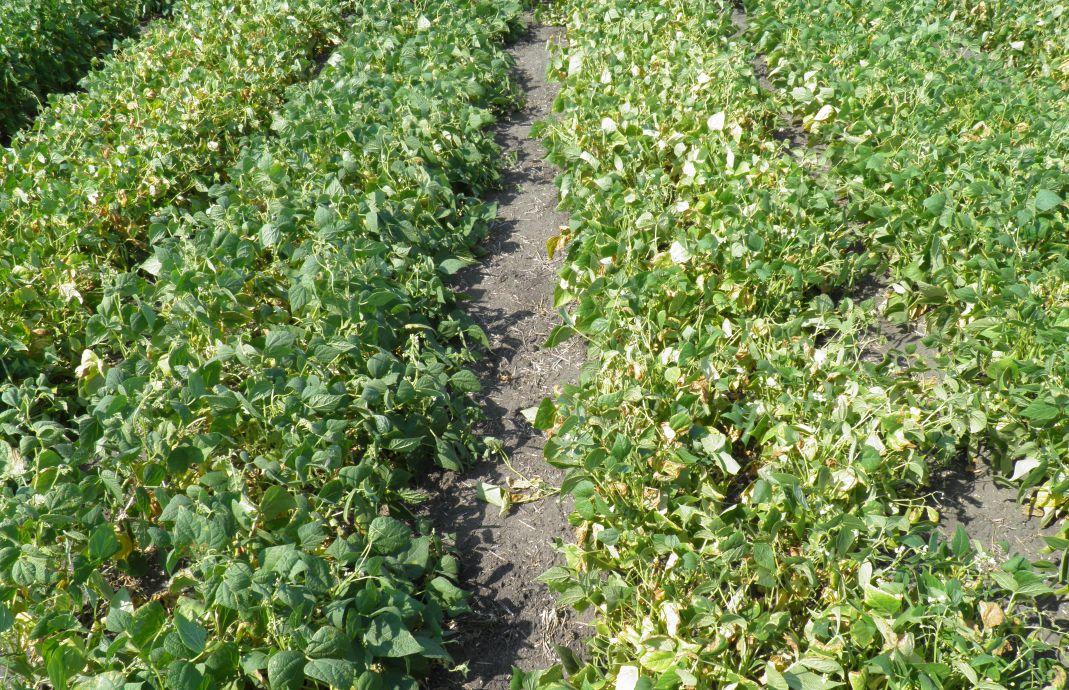
BREEDING BETTER DRY BEAN VARIETIES
Higher yields, increased disease resistance, enhanced seed quality.
By Carolyn King
The Morden dry bean breeding program was established in 2004, so it is still a very young program. There are many traits associated with dry bean yield, quality, and disease resistance, and we have to consider all those traits. So, it takes a long time to build up elite breeding materials. We have been working hard on this, continually improving our breeding lines,” says Anfu Hou, who leads this program at the Morden Research and Development Centre (MRDC) of Agriculture and Agri-Food Canada (AAFC).
“The program’s primary goal is to develop dry bean varieties for the growers and the industry in Manitoba; these varieties can also be grown in neighbouring regions. We also try to generate new knowledge on the genetics of issues like disease resistance, seed quality, and all the other important characteristics of bean varieties.”
He adds, “We work on quite a few different market classes. My focus most recently is on the major beans grown in Manitoba. That includes navy and pinto beans, which are the largest acreage beans. I also work on black beans, a very popular market class in western Manitoba.”
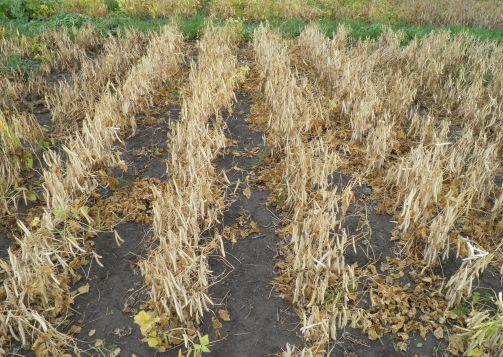
TOP: Resistant (left) versus susceptible (right) bean lines in the common bacterial blight nursery at Morden.
MIDDLE: An early-maturing navy bean selection in Hou’s field plots.
Fighting bean diseases
Improving resistance to yield-limiting bean diseases is a significant part of Hou’s program. “I work very closely with our pulse pathologist here at MRDC. Until recently, it was Dr. Robert Conner, who retired about three years ago. Currently, I’m working with Dr. Ahmed Abdelmagid; he is an oilseed pathologist but is supervising the pulse pathology team for now,” says Hou.
“Although quite a few different dry bean diseases occur in this region, I have really been focusing on resistance to common bacterial blight, the most common foliar disease in the area. And we spend quite a bit of time on anthracnose, which can cause significant yield losses and quality reduction when conditions favor the disease. Another focus in the last few years is root rot; it is always a serious concern for the growers, but it is very difficult to work with. White mould is another concern that is also difficult to work with.”
Hou and the pulse pathologist lead a dry bean disease survey every year in Manitoba. Hou says, “We monitor the dynamic changes of diseases and make sure we don’t miss any emerging concerns.” Along with helping Hou to target his program’s disease resistance work, the survey results also help bean growers and crop advisors to keep up to date on disease issues.
“Also, we work closely with the Manitoba Pulse and Soybean Growers [MPSG] on the different yield trials every year. I have been coordinating the variety registration trials in Manitoba. As part of that, we evaluate disease resistance.”
The pulse pathologist manages the MRDC disease nurseries used to assess the resistance levels in these dry bean varieties and in elite breeding lines developed by Hou’s program and other dry bean breeding programs. Screening for bacterial blight, white mould and root rot is done in the field nurseries; anthracnose resistance screening takes place indoors in growth chambers.
Their research also includes mapping genes involved in resistance to the different diseases and developing molecular markers for screening breeding materials for those resistance genes. Using such markers can really save time in the breeding process.
The breeding program’s most recently registered variety is a cranberry bean named AAC Scotty by Canterra Seeds, which has been granted exclusive rights to the vari-
ety. Hou notes, “AAC Scotty is a very high yielding cranberry bean with resistance to anthracnose. Canterra Seeds is marketing this variety in Manitoba, North Dakota and other regions.”
Getting a grip on seed hardness
Another key objective of Hou’s program is to improve seed quality. “Years back, people didn’t really pay that much attention to the quality side, but we started working on it about 10 years ago and we are making progress,” he says.
When Hou started at Morden in 2008, he heard some concerns about seed hardness in some varieties so he made improving this trait a priority.
Seed hardness problems can occur in dry bean seeds, as well as most other legume seeds. “Normal beans soak up water uniformly and pretty quickly before we cook them. But there are beans that do not absorb water very well even when you soak them overnight. We refer to those beans as ‘stone seeds’ because they are stone hard,” he explains.

“We call this characteristic seed hardness. It is a bad trait for canning and other processing uses.” For example, it can impact processing costs, cooking time, canning quality and nutritional quality.
“We make sure our new breeding materials and new cultivars have much improved characteristics on this aspect.”
Hou and his research group are also investigating the genetic and environmental factors affecting seed hardness. “We have studied different genetic populations of dry beans over the years, and we have been able to identify a few candidate genes or gene loci [locations on the dry bean genome] that are associated with this trait,” he says.

“Seed hardness seems to be a very complex trait. There are many genes involved in different bean populations, different bean types, and different environmental conditions.” Hou and his group are continuing to study seed hardness to further increase understanding of this trait.
Tackling marsh spot
Marsh spot is another seed quality issue that the program is tackling through breeding and research. “Marsh spot is most commonly found in cranberry beans, but sometimes people also report it in kidney beans,” notes Hou. “If you crack open a normal, healthy cranberry bean seed, you’ll see that the center is pure white or cream-coloured. But with marsh spot, you see a dark spot right in the core of the seed, which really reduces seed quality.”
He explains that marsh spot is thought to be associated with a mineral deficiency, most likely a manganese deficiency. It can be considered an abiotic stress disorder connected with certain soil or growing conditions that limit manganese uptake by plants. But susceptibility to this disorder also has a genetic component.
“On the breeding side, we screen for the trait in our breeding materials to make sure we don’t get that bad trait in our new varieties,” he says.
On the research side, they have been investigating the disorder’s genetics. “Through extensive screening of germplasm, Bob Conner found a couple of cranberry bean lines that have better resistance to marsh spot. So, we created genetic populations [by crossing resistant and susceptible cranberry lines]. And we had a graduate student who examined these populations to look at the genetics of this trait.”
Their results show that resistance to this disorder is controlled by multiple genes. In particular, they determined marsh spot resistance is linked to two genes associated with manganese transport in the plant. Their findings are helping to increase understanding of this disorder as well as identifying candidate genes that could help in breeding for resistance to marsh spot.
“We are continuing to work on marsh spot to mine the germplasm for more potential resistance genes that we can stack to improve this trait,” Hou says.
“We are also trying to develop different protocols to speed up the evaluation of breeding materials for resistance to marsh spot because
field screening for this trait takes multiple years. One of our goals is to develop molecular markers that we can use to quickly screen breeding materials for the resistance genes.”
Boosting nitrogen fixation
One of Hou’s newest projects aims to develop dry bean varieties with a greater capability for nitrogen fixation, which is the process by which a legume plant and its rhizobial bacteria convert atmospheric nitrogen into a form that the plant can use.
Improved nitrogen fixation would reduce input costs for growers and improve the sustainability of bean production. “Dry beans are considered poor fixers of nitrogen, compared to other legumes like soybean. For instance, the application of nitrogen isn’t usually recommended in soybean production [because soybeans can fix enough nitrogen to meet their own needs]. But people say dry beans usually fix no more than 50 per cent of their nitrogen, so the application of some nitrogen fertilizer is typically recommended for growing dry beans,” he explains.
Hou notes that previous research, for example, studies at Michigan State University and the University of Guelph, have shown there is genetic variation in the nitrogen fixation capacity of dry beans, with certain lines being better than others at fixing nitrogen. However, there is little information about the range of variation in this trait in the early maturing germplasm suited to much of Manitoba’s dry bean growing area.
“We have a large collection of dry beans, and hopefully, we can identify materials with a higher capability for nitrogen fixation that we can use in the future to improve this trait in our dry bean cultivars,” he says.
“But we believe nitrogen fixation is a very complicated issue, and many different elements may be involved, including growing conditions such as night temperatures. So, in addition, we also want to try to understand the mechanisms involved and find the genes associated with nitrogen fixation.”
For Hou, one of the most rewarding aspects of his dry bean breeding and research program is the opportunity to work with growers. “I’ve been the AAFC representative to the board of directors of the Manitoba Pulse and Soybean Growers. I love to interact with the growers and listen to their concerns and suggestions for research, which help me tremendously in deciding my research directions and projects. And every year, I love to see the growers’ harvest, and every improved harvest makes me so happy.”
He also enjoys collaborating with other researchers across Canada, including both private and public breeders, pulse pathologists and molecular biologists. And he really appreciates the ongoing support from MPSG and AAFC for the Morden dry bean breeding and pathology programs, as well as the efforts of the technicians and others involved in these two programs. “Without this support, we wouldn’t be able to do this work to develop new knowledge and new dry bean varieties that can benefit the farmers and the industry in this region.”

Greenhouse bean plants used for seed propagation in Hou’s breeding program.

CULTIVATING INNOVATION
Western Canada’s Living Labs lead the way in agro-ecosystem solutions.

By Julienne Isaacs
At the first-ever International Forum on Agroecosystem Living Labs held this past October in Montréal, Que., researchers, farmers and industry representatives gathered to discuss lessons learned from Living Labs in Canada and around the world.
The event was co-hosted by Agriculture and Agri-Food Canada (AAFC) and France’s Institut national de recherche pour l’agriculture, l’alimentation et l’environnement (INRAE). Speakers from countries including Belgium, Greece, Germany, Uruguay and the United States shared insights from research projects and experiences in their respective regions.
The Living Labs concept, originally developed by MIT as a usercentred, open innovation model for research in information technology, has three core principles, says François Chrétien, director of Living Labs, Agroclimate, Geomatics and Earth Observation Division and Saint-Jean-sur-Richelieu Research and Development Centre at AAFC.
“The first is user-centred innovation, which means the user –it could be a citizen, [but] for us it’s the agricultural producer – is involved throughout the innovation approach, not just consulted at the beginning of the project,” he says.
The second principle is that projects take a multi-partner approach to tackling common problems. And the third is the “reallife experimental setup,” Chrétien says. “The scientists work on real farms with real producers. This creates challenges with scientific research – there’s a lot more variability. [But] when you put the three principles together, you really have the added value of the living lab.”
Chrétien has been involved in AAFC’s Living Labs programs
since the beginning and helped present the concept to the G20 in 2018 – the first time the Living Labs model had been applied in this way in an agricultural context. At the G20, an international working group was formed, with France and the European Union emerging as key collaborators with AAFC, says Chrétien. Recently, the EU has launched an initiative to establish 100 Living Labs focused on soil health across Europe, building on the lessons learned in Canada.
“We’ve seen such a rapid increase in the use of the approach, and attention on the approach internationally. We’ve been out ahead in its application,” he adds. “Even before 2018, we had an internal conversation at AAFC that we needed to address agro-ecological challenges in a different way – we needed to break down the silos between the natural and social sciences and reconnect with the producer.”
In Canada, nine new Living Labs – six of them in Western Canada – were announced last year, adding to the four existing Living Labs launched in 2018.
“Across our network of Living Labs, each one is applying a common approach using common objectives,” explains Chris McPhee, associate director of Living Labs for AAFC. “But each of those Living Labs is quite unique in terms of what it does within that framework.”
Western Canadian Living Labs
The new Living Labs announced in 2022 include one in B.C., one
TOP: Roger Daniels of Mistawasis Nêhiyawak highlights key goals for Bridge to Land Water Sky, the first Indigenous-led Living Lab in AAFC’s nationwide network.

in the Peace Region of B.C. and Alberta, an Alberta Beef Producers-led project in Alberta, a province-wide Living Lab in Alberta, a First Nations-led project with partners Mistawasis Nêhiyawakand Muskeg Lake Cree Nation in Saskatchewan and a Central Prairies project in Saskatchewan.
The British Columbia project is led by the B.C. Investment Agriculture Foundation (IAF) and will look at six new beneficial management practices for farming that will help mitigate the effects of climate change. The Peace Region project, led by the Peace Region Forage Seed Association, has a similar approach – it’ll look at the impacts of applying BMPs on land management, economics and social elements on a whole-farm level.
The Alberta Beef project will examine the use of beef, forage and cropping systems to improve soil carbon sequestration and reduce greenhouse gas emissions, while the province-wide Regenerative Alberta Living Lab will aim to study the use of regenerative practices across the province.
The southern Saskatchewan Living Lab, led by South of the Divide Conservation Action Program, will examine four key areas: avoiding land use conversion; adaptive grazing management; restoring and enhancing perennial plant communities; and livestock grazing of diverse annual cover crops.
The Bridge to Land Water Sky Living Lab, led by Mistawasis Nêhiyawak and Muskeg Lake Cree Nation, is history-making: it’s the initial First Nations-led Living Lab in Canada. McPhee says the project will have five key goals.
“One is improving land management strategies for the mitigation of greenhouse gas emissions and to improve carbon se -
questration,” he says. “They’re also looking at increasing food sovereignty and food security and protecting biodiversity and water. There’s also an emphasis on creating employment and learning opportunities for youth and communities and a focus on reimagining Indigenous landowner and producer relationships. Not just within their context, [but] strengthening partnerships with other groups in the Living Labs.”
McPhee says that different Living Labs operate on varying scales and in different
Participants
in Ferme Cristallina, Que., where they saw innovative practices codeveloped and tested right on the farm.
ways, and this diversity is a real strength.
“We see a great diversity in the Living Labs, which reflects the diversity of agriculture across Western Canada,” he says. “That’s a key message – these are place-based projects, and although they all have common goals, they’re reflecting the needs of agriculture in those places. The Living Labs are engines of innovation to come up with solutions that address producers’ needs.”
There is a very zoomed-out international layer to the Living Labs approach for Canada, on top of the national and regional layers. But its chief goal is to centre on the needs and efforts of producers.
“Ultimately, we’re trying to reach a broad-scale adoption of practices that will make a difference,” says McPhee. “That kind of adoption comes from sharing with other producers. These Living Labs have a lot of knowledge exchange. Reaching out to





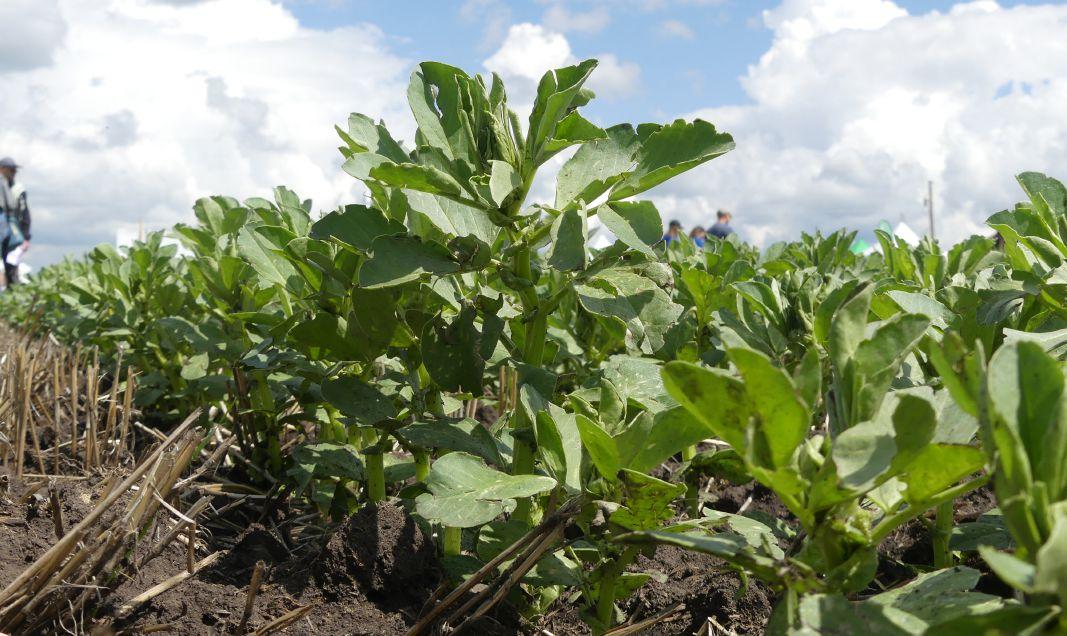
INVESTIGATING WEED CONTROL IN FABA BEAN
Research developed a greater understanding of weed in faba bean.
by Bruce Barker
As faba bean acreage started to expand in Saskatchewan, a better understanding of how weeds can best be managed was a focal point of research at the University of Saskatchewan’s Plant Science Department. From 2016 to 2021, Saskatchewan Pulse Growers funded 13 faba bean weed control research projects at Professor Chris Willenborg’s lab.
One of the first studies developed an understanding of the critical period of weed control (CPWC). This is defined as the period in crop growth where weeds must be controlled to prevent yield loss. Research took place at the Kernen Research Farm near Saskatoon, Sask., and the Western Applied Research Corp (WARC) located at Scott, Sask., from 2018 through 2021.
Twelve different weed removal timings were compared, as well as a weed-free control and a weed-infested control. CDC Snowdrop was seeded into plots that had been treated with a glyphosate + bromoxynil or carfentrazone pre-seed application.
• The CPWC was found to be from the five to nine nodes (three to seven leaves) growth stages. This means that the crop must be kept weed-free until the seven-leaf stage.
• Additionally, applying a pre-emerge residual herbicide can also reduce early-season weed competition.
Screening herbicides for tolerance
Willenborg conducted six studies that investigated tolerance to vari-
ous pre- and post-emergent herbicides. In one study, he found that faba bean tolerance to pyridate, a Group 6 herbicide sold under the tradename Tough 600EC, was unacceptable when applied at the two to three-node stage.
• Pyridate at all rates tested caused significant yield losses of 17 to 36 per cent.
Another study looked at tolerance to pre-seed herbicides from 2016 and 2017 at Kernen, and at Goodale Research Farm and Kernen in 2018 through 2020. Products were applied at 1x and 2x rates and included pyroxasulfone (Zidua), sulfentrazone (Authority), pyroxasulfone plus carfentrazone (Focus), pyroxasulfone plus sulfentrazone (Authority Supreme), pyroxasulfone plus saflufenacil (Zidua + Heat), flumioxazin (Valtera), pyroxasulfone plus flumioxazin (Fierce) and saflufenacil (Heat).
Overall, most of the herbicides did not impact crop establishment, development, or yield, but there were some exceptions. In 2018, there was some initial injury from the application of Zidua + Heat, Valtera (2X rate) and Zidua + Valtera when applied pre-emergence on the sandier soils at Goodale, but no injury was observed for any products in 2019.
In 2020 at both Goodale and Kernen, Focus caused greater than
ABOVE: Thirteen research studies looked at expanding faba bean weed control options.
10 per cent injury for faba bean at 1x and 2x alone or when tank mixed with Valtera at pre-plant or pre-emergence. At the 2x rate, pre-plant Focus significantly reduced faba bean seed yield by 11 per cent at Kernen and by 13 per cent at Goodale compared to the hand-weeded untreated check.
• These results suggest that Focus may not be a good fit as a preemergent herbicide for faba bean production, particularly under low organic matter, sandy soils.
Nine post-emergent herbicides were evaluated at Kernen in 2016 and 2017 and were applied at the four-leaf stage at 1x and 2x rates. Products screened included topramezone (Armezon), bentazon (Basagran), fomesafen (Reflex), Armezon + Basagran, cloransulammethyl, cloransulam-methyl plus bentazon, Reflex + Basagran, fluthicacet-methyl (Cadet) and fluthiacet-methyl plus Basagran. Basagran is the only registered post-emergent product on faba bean.
• Based on the overall results of this trial, none of the unregistered products would be considered as new options for post-emergent weed control in faba bean.
A tolerance screening trial to layering pre- and post-emergent herbicides was conducted in 2017 and 2018 at Scott, Kernen and the Northeast Agriculture Research Foundation at Melfort.
Six pre-emergent herbicide treatments, including pyroxasulfone (Zidua), ethafluralin (Edge), saflufenacil (Heat), flumioxazin (Valtera), pyroxasulfone + sulfentrazone (Authority Supreme) and pyroxasulfone + saflufenacil (Zidua and Heat) were applied on their own. In addition, these pre-emergent herbicides were also applied in a layered combination with imazamox/ bentazon (Viper) and imazamox/imazethapyr/sethoxydim (Odyssey). Viper and Odyssey were also each applied with no pre-emergent application.
• Pre-emergent application provided significant reductions in broadleaf weed densities prior to the post-emergent application.
• Depending on the weed spectrum, the combined pre- plus post-emerge application did not always result in higher yields than post-emerge herbicides applied alone.
“We believe that growers have to consider the long-term economic benefits of this layering strategy in terms of delaying herbicide resistance rather than just short-term economic returns,” says Willenborg.
Recropping trials
Willenborg also ran three recropping trials looking at the impacts of residual herbicide carryover on faba bean production. In the first trial, clopyralid (Lontrel), quinclorac (Accord), flucarbazonesodium (Everest), pyrasulfotole + bromoxynil (Infinity), dicamba (Banvel II) and metsulfuron-methyl (Ally) were applied at different rates to spring wheat the previous year in 2016 at Kernen and Scott. Post-harvest 2,4,D was also applied as a treatment following wheat harvest. The trial was repeated in 2017 at Melfort, Scott and Kernen.
Across the three years, faba bean injury from herbicide residues was inconsistent. Most herbicides caused some herbicide injury initially under the right environmental conditions.
• Accord and Lontrel residues at higher rates are more likely to cause damage to faba bean and to reduce yield, especially under dry, low pH and low soil organic matter soil conditions.
• Growers should avoid growing faba bean on fields where these two Group 4 products have been applied the previous year.
A second recropping study looked at variety tolerance to residual
herbicides. Lontrel (300 g ai/ha), Accord (200 g ai/ha), Everest (40 g ai/ha) and Ally (9 g ai/ha) were fall-applied at 2x the rate to chemfallow in 2016 and 2017 at Kernen. Three low-tannin varieties, CDC Snowdrop, Snowbird, and Tabasco and three tannin varieties, CDC SSNS-1, Malik and Taboar were grown on the herbicide-treated land the following spring in 2017 and 2018.
• There were no differences between faba bean varieties in crop establishment, biomass or yield for the herbicides assessed.
• Lontrel produced high crop injury and yield loss.
• Everest residues resulted in higher levels of crop injury than both Accord and Infinity.
A third residue study looked at faba bean tolerance to Group 2 and Group 4 herbicide residue in comparison to field pea tolerance and was conducted at Kernen in 2017. The intent was to see if field pea re-cropping restrictions could also be applied to faba bean. CDC Snowdrop faba bean and CDC Meadow field pea were grown on plots that had increasing rates of Lontrel and Everest applied the previous year.
• Injury to both crops was much greater from Lontrel than Everest.
• The response of field pea and faba bean to Everest was similar.
• Faba bean was more sensitive to Lontrel residues than field pea.
Integrated weed management improves weed control
Field studies were conducted at Kernen in 2017, 2018 and 2019, and Melfort in 2019. The study was done to see if higher seeding

rates along with pre-emergent herbicides could reduce the need for a post-emergent herbicide application.
Seeding rate was 2.5, 5, 7.5, 10, 12.5 and 15 seeds per square foot (25, 50, 75, 100 and 125, 150 seeds/m2). Herbicide applications compared were glyphosate alone pre-seed, glyphosate with Authority Supreme (PRE) and glyphosate with Authority Supreme followed by Viper ADV post-emergent (PRE+POST).
• Layering glyphosate with Authority Supreme followed by Viper ADV post-emergent generally provided the best weed control and yield at all seeding rates.
• A seeding rate of five seeds/ft2 is recommended based on this study, but if glyphosate was the only burn down herbicide applied, a seeding rate of 12.5 seeds/ft2 was needed to optimize yield.
Another integrated weed management study investigated seeding date, seeding rate, row spacing and mechanical weed control combined with pre-emergent herbicides with differing lengths of residual control. The study was conducted at Kernen from 2017 through 2019.
Three levels of IWM were compared. The low IWM level was late seeding (May 30 to June 7), wide row spacing of 23 inches (60 cm), regular seeding rate of 4.5 plants/ft2 (45 seeds/m2) and no mechanical rotary hoeing weed control. Medium IWM included an average seeding date (May 18–24), 12-inch (30 cm) row spacing, regular seeding rate of 4.5 plants/ft2 (45 seeds/m2) and no rotary hoeing. High IWM included early seeding (May 5–10), 12-inch row spacing, high seeding rate of 9.5 plants/ft2 (95 seeds/m2) and mechanical rotary hoeing.
The four PRE residual herbicide treatments consisted of glyphosate alone or tank-mixed with a short residual herbicide, Heat (safluf-

KOCHIA CONTROL IN CANOLA ISN’T JUST A FALL OPTION
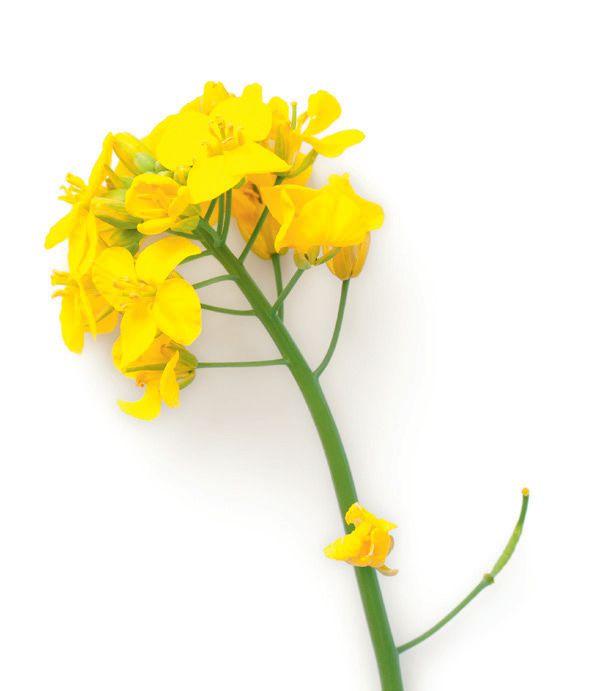
While Edge ® is a great option for kochia control in front of lentils, did you know that it is also registered for kochia control in front of your canola this spring? It also provides strong control of wild buckwheat, redroot pigweed and many of your toughest weedsEdge ® is up to the challenge.
For more information about Edge ® MicroActiv, please contact your local Gowan Representative!
enacil), moderate residual, Valtera herbicide (flumioxazin), and season-long residual Authority Supreme (sulfentrazone + pyroxasulfone).
• The results of this study showed that all three of the soil residual herbicides improved weed control.
• Additionally, by increasing from low to medium intensities of IWM, significant improvements to both weed control and crop yields were observed.
Layering for weed control
A trial conducted at Kernen and Melfort from 2017 through 2020 assessed whether a residual pre-emergent application allows for a broader application timing window for post-emergent herbicide application.
Pre-emergent herbicide treatments included a glyphosate tankmix with either Aim (carfentrazone), Heat or Valtera. Aim has no residual, while Heat and Valtera provide some residual control of some broadleaf weeds. Post-emergent applications included Odyssey or Viper at either the two or six-leaf stage (four and eight node stages).
• Heat and Valtera applications had lower weed biomass than Aim.
• There was no difference in weed biomass between the two and six-leaf stages.
• Layering pre- and post-emerge herbicides increased crop biomass but not yield.
Faba bean desiccation
Research was conducted to determine the best timing and herbicide treatments on dry down and faba bean yield. The study was carried out at Kernen in 2018 and 2019, and Scott from 2018 through 2020. Herbicide applications included glyphosate, Heat (saflufenacil) and glyphosate + Heat at application timings of 60, 50, 40, 30 and 20 per cent seed moisture content. Visual ratings were conducted at seven, 14 and 21 days after treatment.
• All three herbicide treatments were found to have similar drydown rates.
• Application of harvest aid herbicides at 20 per cent moisture level had a 17 per cent greater dry-down rate compared with the application at the 60 per cent moisture level.
• There was no herbicide effect on green and black seed percentage.
• If perennial weeds are present, an application with glyphosate is recommended.
Additional research was conducted to see if there were variety interactions with desiccants between low-tannin and tannin cultivars. Three low-tannin varieties (CDC Snowdrop, Snowbird and Tabasco) and three tannin varieties were compared (CDC SSNS-1, Malik and Taboar). Malik, CDC Snowdrop and Snowbird are considered early maturing (104 days), and CDC SSNS-1, Tabasco and Taboar as late maturing (105–107 days).

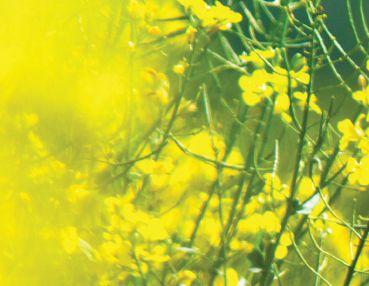

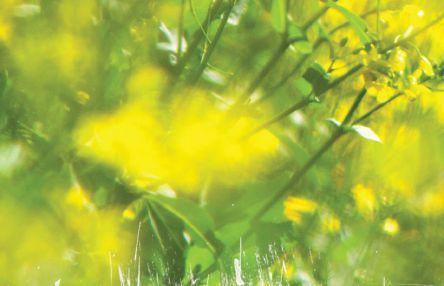

Five different herbicide treatments compared were untreated, glyphosate, Heat, Reglone (diquat) and Liberty (glufosinate), and were applied when bottom pods were black at approximately 30 per cent seed moisture. Liberty is not registered for preharvest application. Dry-down herbicides produced no significant differences in crop yield, thousand seed weight, plant counts, black pod percentage or straw moisture content compared to the untreated check.
Reglone and Liberty consistently provided better crop dry-down than the untreated check in the late maturing cultivars.

















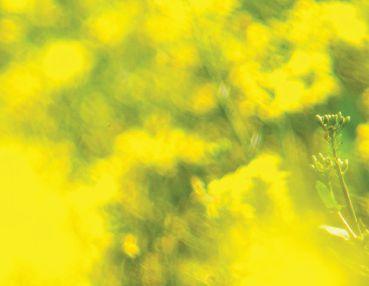



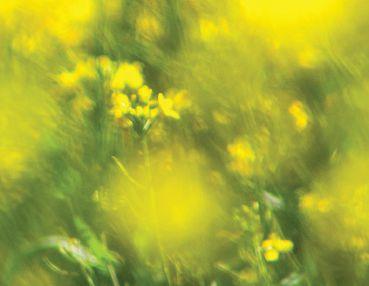
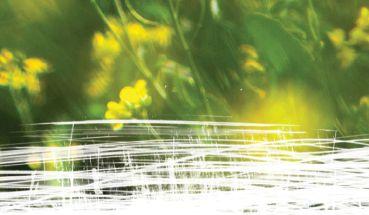
SKIP IMITATOR PRODUCTS FOR AGRONOMICALLY EFFECTIVE SOLUTIONS
Trusted solutions like TRIBUNE™ nitrogen stabilizer, ANVOL™ nitrogen stabilizer and SUPERU™ fertilizer deliver higher active ingredient concentrations that low-rate products can’t match. See how other stabilizers stack up to proven solutions that defend your nitrogen and your bottom line.
BRUCE BARKER, P.AG CANADIANAGRONOMIST.CA

OPTIMIZING NITROGEN FERTILITY FOR HYBRID CANOLA
Hybrid varieties of canola are widely grown on the Prairies, but their yield response to N fertilizer has not been recently updated, especially as newer, higher yielding hybrids are introduced to the marketplace. A research study was conducted across Canada to investigate hybrid canola yield response and N use efficiency (NUE) to N fertilization and to determine site-specific economic optimum N rates (EONR).
A four-year field trial led by Bao-luo Ma at the Ottawa Research and Development Centre, Agriculture and Agri-Food Canada, was conducted at each site from 2018 through 2022. The sites were at Beaverlodge and Olds, Alta., Scott, Swift Current and Melfort, Sask., Brandon and Carman, Man., and Ottawa, Ont.
Site-specific canola hybrids were used across years, including 6074RR, PV581GC, PV533G, L233P, L255PC and L252. They were seeded to ensure a minimum plant density of seven plants per square foot (80 plants/m 2). Preceding crops varied and included oat, wheat, canola, barley or corn.
Eight fertilizer treatments were compared with urea (46-0-0) applied at:
1. Pre-plant 45 lb. N/ac. (50 kg N/ha)
2. Pre-plant 90 lb. N/ac. (100 kg N/ha)
3. Pre-plant 134 lb. N/ac. (150 kg N/ha)
4. Pre-plant 178 lb. N/ac. (200 kg N/ha)
5. Split 45 lb. N/ac. (50 kg N/ha) at pre-plant plus 45 lb. N/ac. (50 kg N/ha; N50 +50) topdressed at the 4–6 leaf stage
6. Split 45 lb. N/ac. (50 kg N/ha) at pre-plant plus 90 lb. N/ac. (100 kg N/ha; N50 +100) topdressed at the 4–6 leaf stage
7. Split 45 lb. N/ac. (50 kg N/ha) at pre-plant plus 134 lb. N/ac. (150 kg N/ha; N50 +150) topdressed at the 4–6 leaf stage
8. Unfertilized control treatment (N0)
Composite soil samples were collected prior to planting at each site in each year. Phosphorus (P), potassium (K) and sulfur (S) were applied and incorporated as required. These applications added an additional 15.6 lb. N/ac. (17.5 kg N/ha).
Canola yield significantly increased by up to 40 per cent with increasing N rate up to 134 lb./ac. pre-plant application. The estimated maximum yield at the 139 lb. N pre-plant rate (156 kg N/ha) was slightly higher but not significantly different than the 134 lb. N rate. Further increases in N application may result in lower yields due to factors other than N application limiting yield development.

Across years, the highest average yield was at the Olds site in the Black soil zone at 41 bu./ac. (2,323 kg/ha), and the lowest average yield was at Swift Current at 18 bu./ac. (1,011 kg/ha) due to severe drought and uneven rainfall. The highest yield of 65 bu./ac. (3,644 kg/ ha) was at Beaverlodge in 2019.
Nitrogen application method – all pre-plant or split – did not significantly affect canola yield. However, there were some individual site-year cases where differences were observed. At eight of 32 siteyear cases, the split application strategy produced similar to slightly higher canola yield than pre-plant-only N.
For example, at Ottawa in 2021, the split-N treatment produced 19 per cent higher yields than the equivalent preplant-only application under normal rainfall and slightly cooler conditions. At Melfort in 2022, the opposite was observed with the pre-plant applications yielding higher than split applications under environmental conditions of sufficient rainfall leading up to topdressing N followed by moderate drought stress.
Nitrogen fertilizer rate significantly impacted NUE. The highest NUE was at pre-plant 45 lb. N, and the lowest at pre-plant 178 lb. N, and this trend occurred at 25 of 32 site-year cases. Nitrogen use efficiency decreased from 13 to 6.6 lb. yield/lb. N input (six to 2.8 kg yield/kg N) as N fertilizer rate increased from 45 to 178 lb. N/ac. Overall, the application method did not affect NUE.
Analysis of the data found that the number of heat-stress days (i.e., days with temperature above 29.5°C) and heat-induced thermal accumulation four weeks before and after flowering directly impacted canola response to N fertilization and EONR.
The economic optimum nitrogen rate (EONR) was calculated taking into consideration the yield and N rate responses and the price ratio of N fertilizer to canola seed. The EONR was impacted by heatstress days and thermal accumulation.
The EONR varied by site and was estimated at 75 to 90 lb. N/ac. (85 to 100 kg N/ha) in the low-yielding Brown soil zone, 130 to 148 lb. N/ac. (146 to 166 kg N/ha) in the Black soil zone and 125 lb. N/ac. (140 kg N/ha) in Ontario.
The researchers suggest that a split-N method be considered as a strategy to help adjust topdressing levels to account for early-season weather conditions. This could help achieve the goals of increasing canola productivity and reducing greenhouse gas emissions from fertilizer use. However, significant rainfall after topdressing N is required and the energy and time costs must also be considered.
Bruce Barker divides his time between CanadianAgronomist.ca and as Western Field Editor for Top Crop Manager. CanadianAgronomist.ca translates research into agronomic knowledge that agronomists and farmers can use to grow better crops. Read the full Research Insight at CanadianAgronomist.ca.


THE LEVEL OF PRECISION YOU’VE COME TO EXPECT FROM US IS NOW AVAILABLE ON YOUR SPRAYER.
Take charge of your spraying accuracy through independent control of rate and pressure with SymphonyNozzle™ and a Gen 3 20|20® monitor. Together they reduce over-application with swath control and level out inconsistent application on turns. Take your sprayer a step further and add ReClaim™, our recirculation system.
WE BELIEVE IN BETTER SPRAYERS WITH BETTER CONTROL.

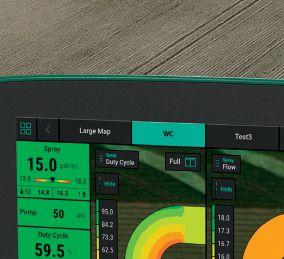









RETROFIT YOUR CURRENT SPRAYER AND SAVE ON INPUTS.





